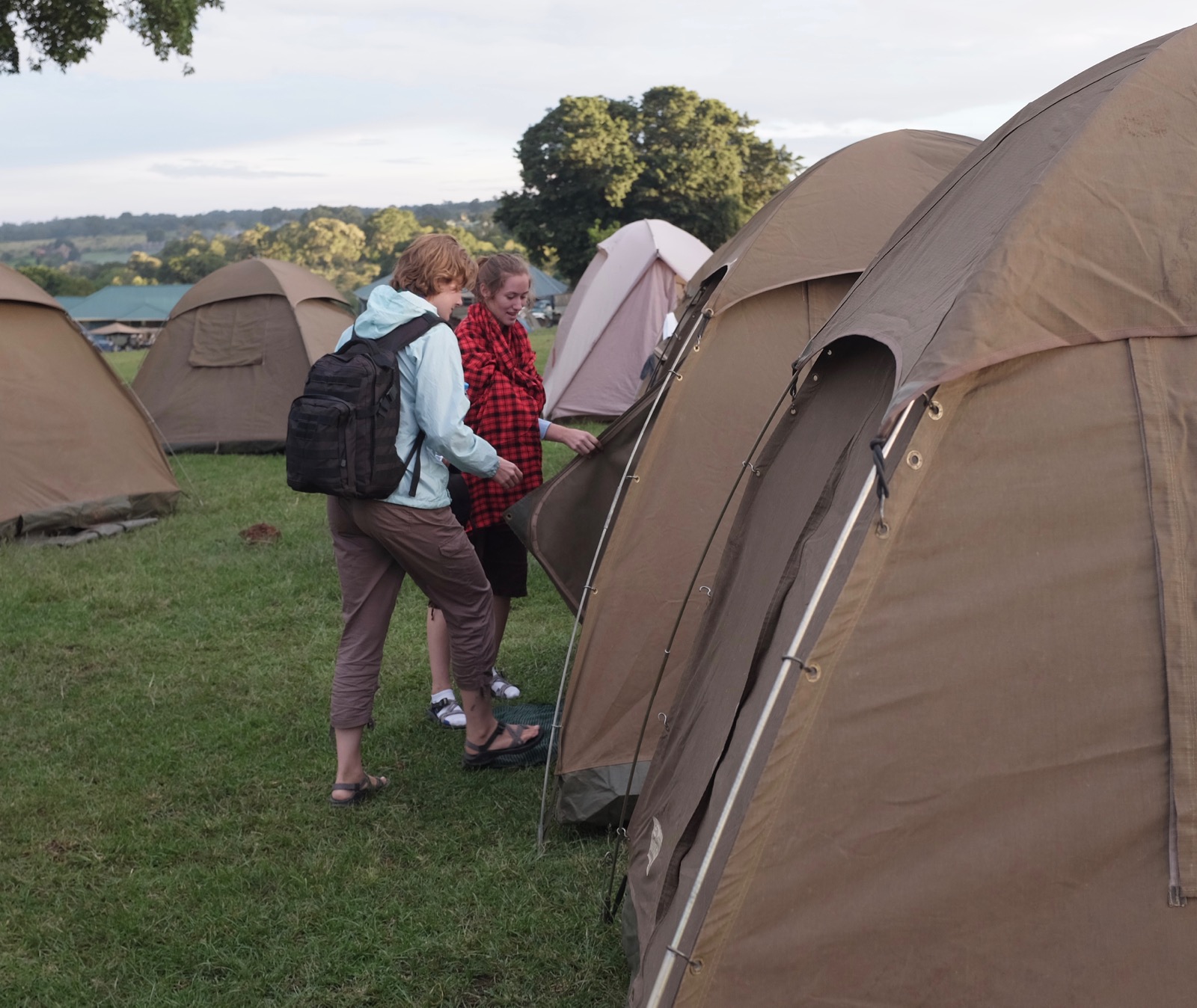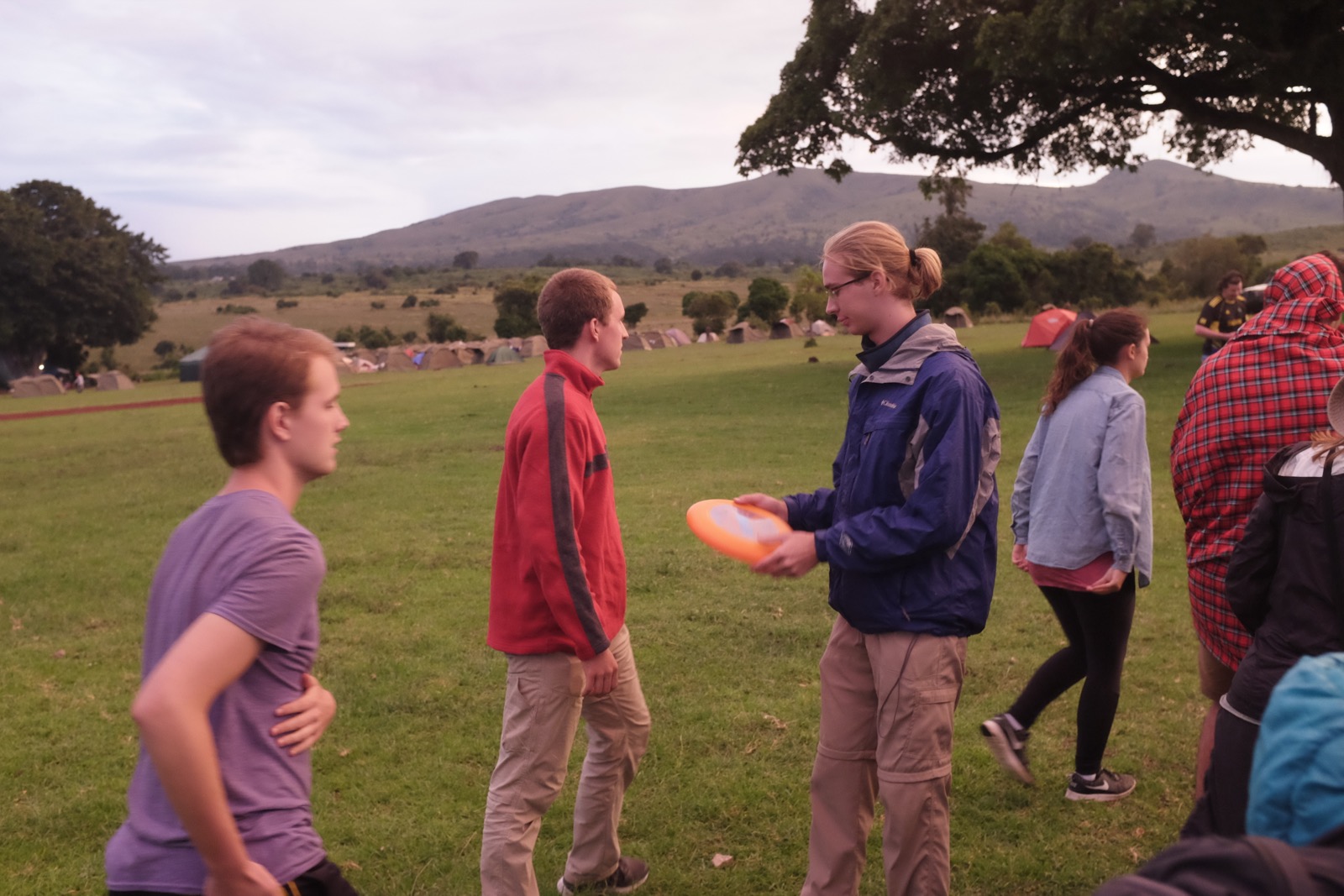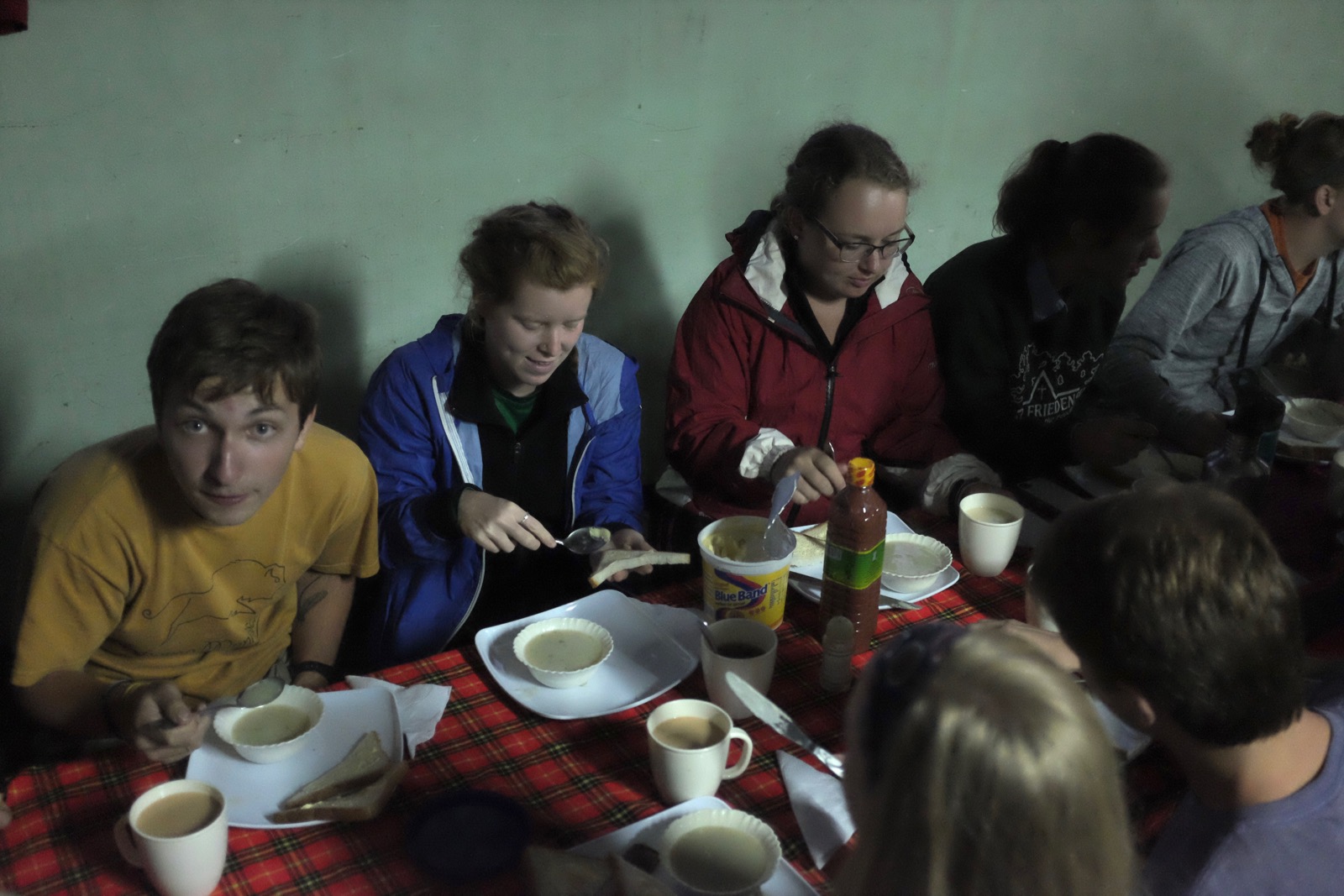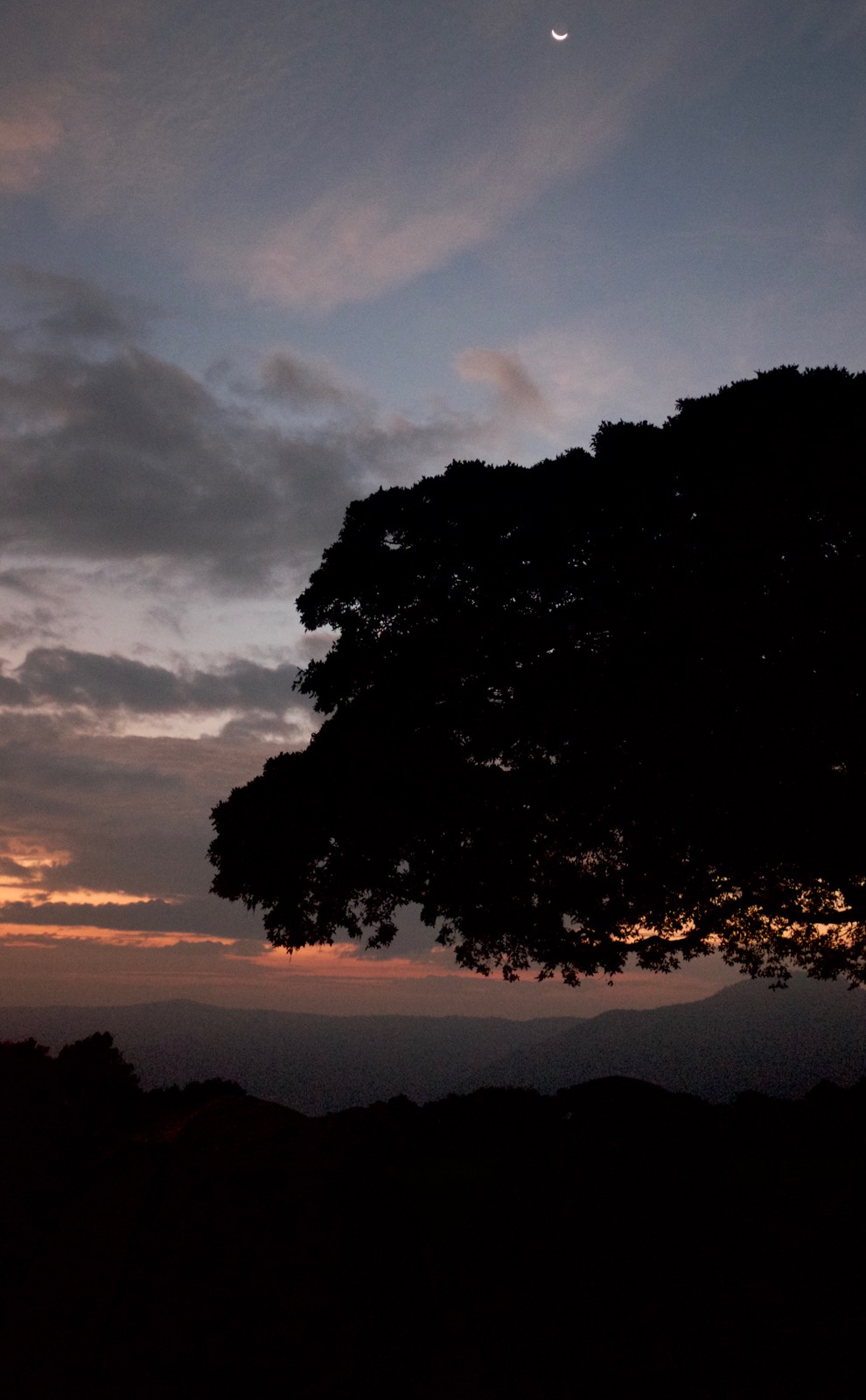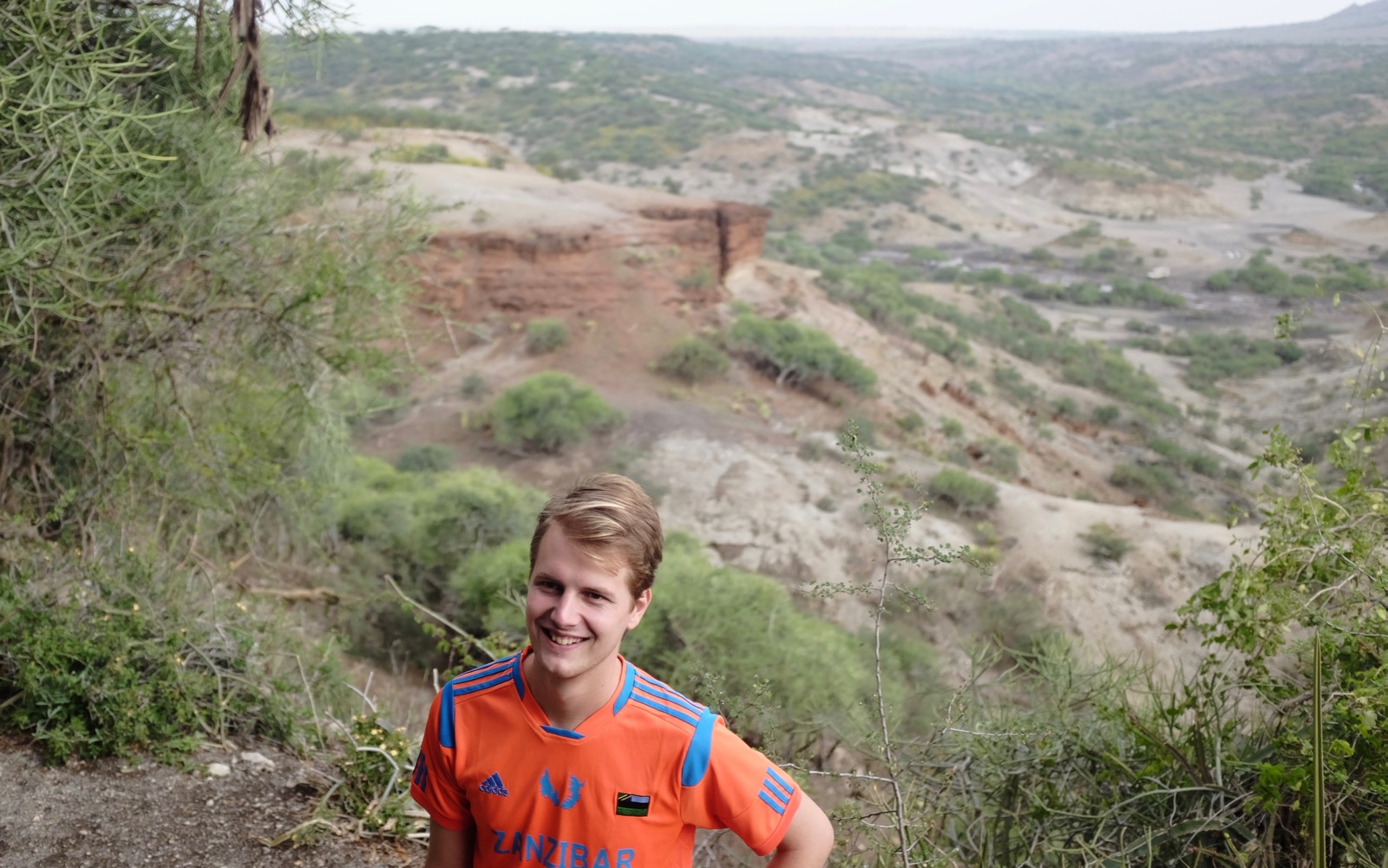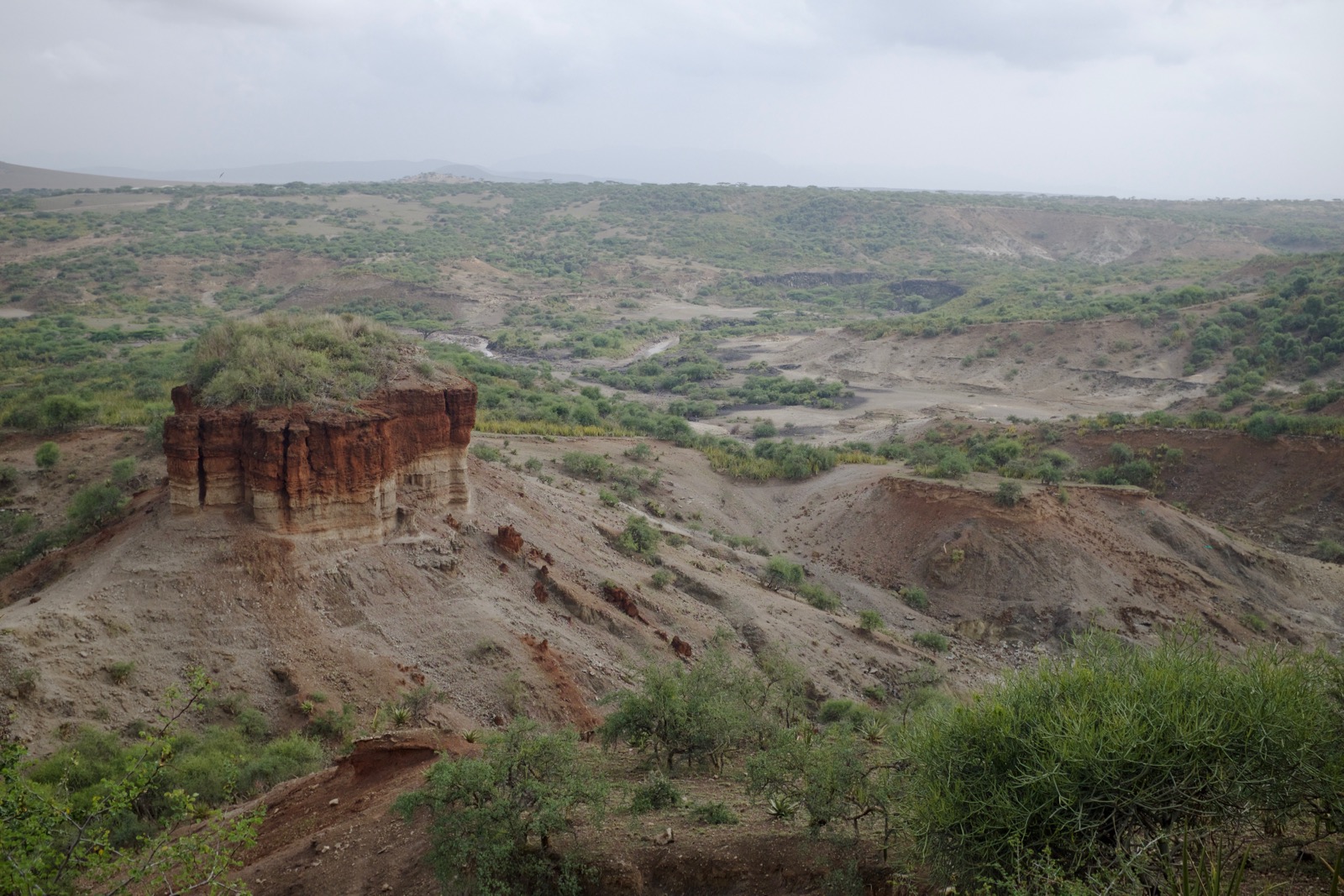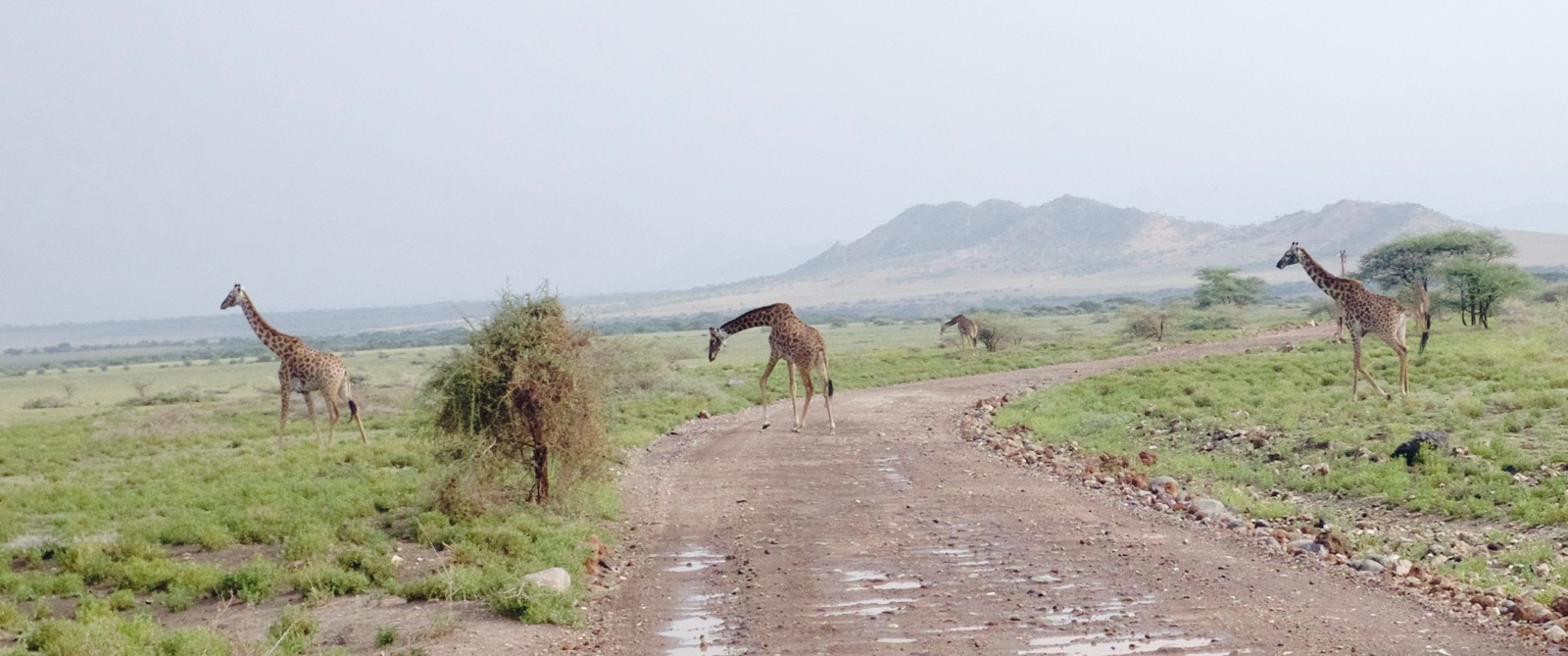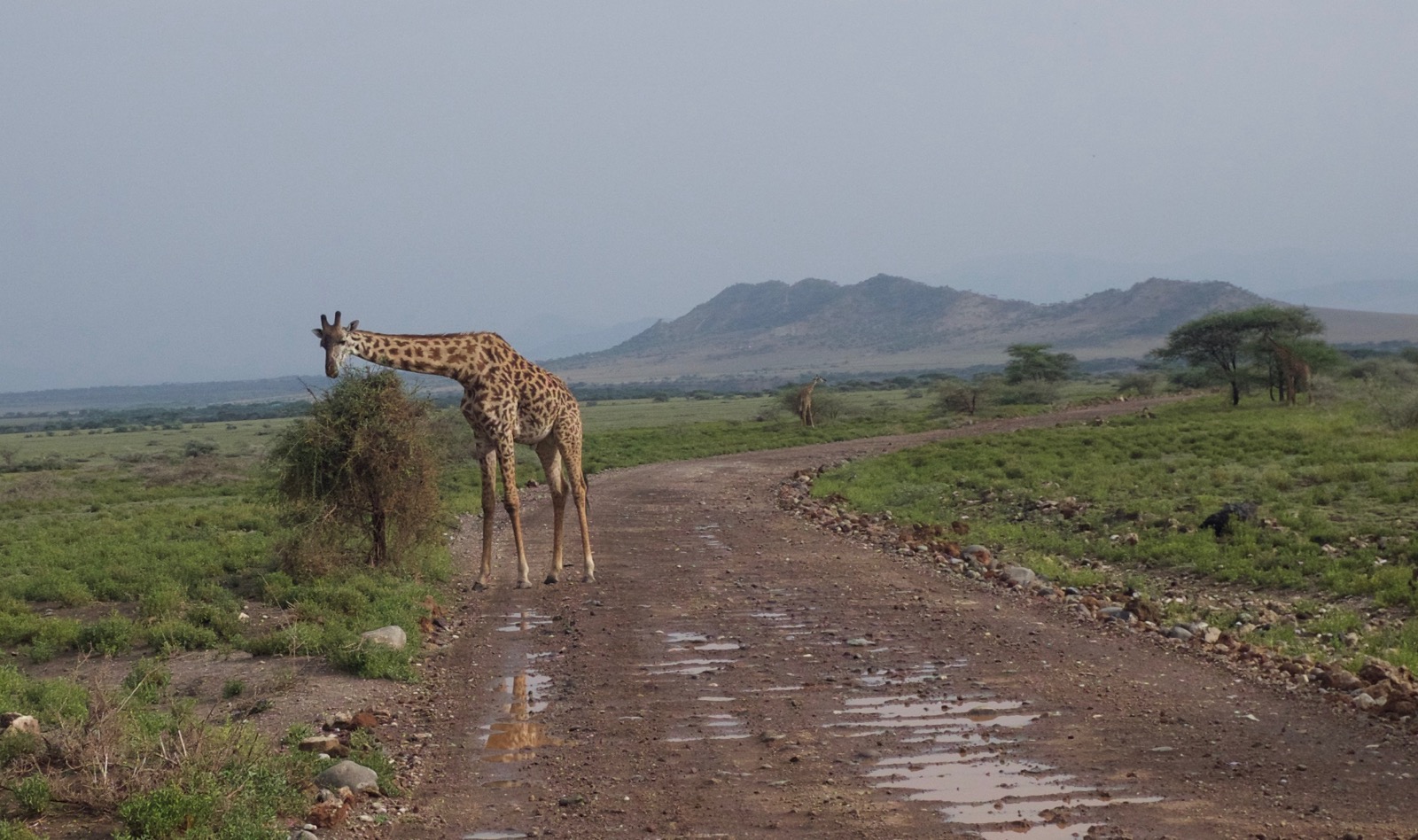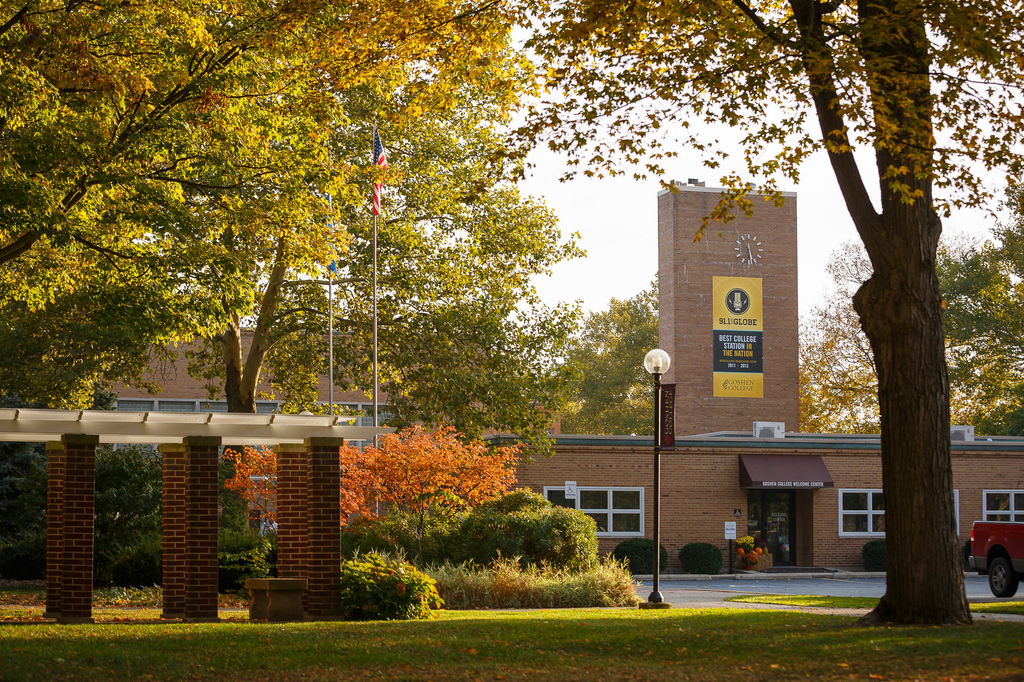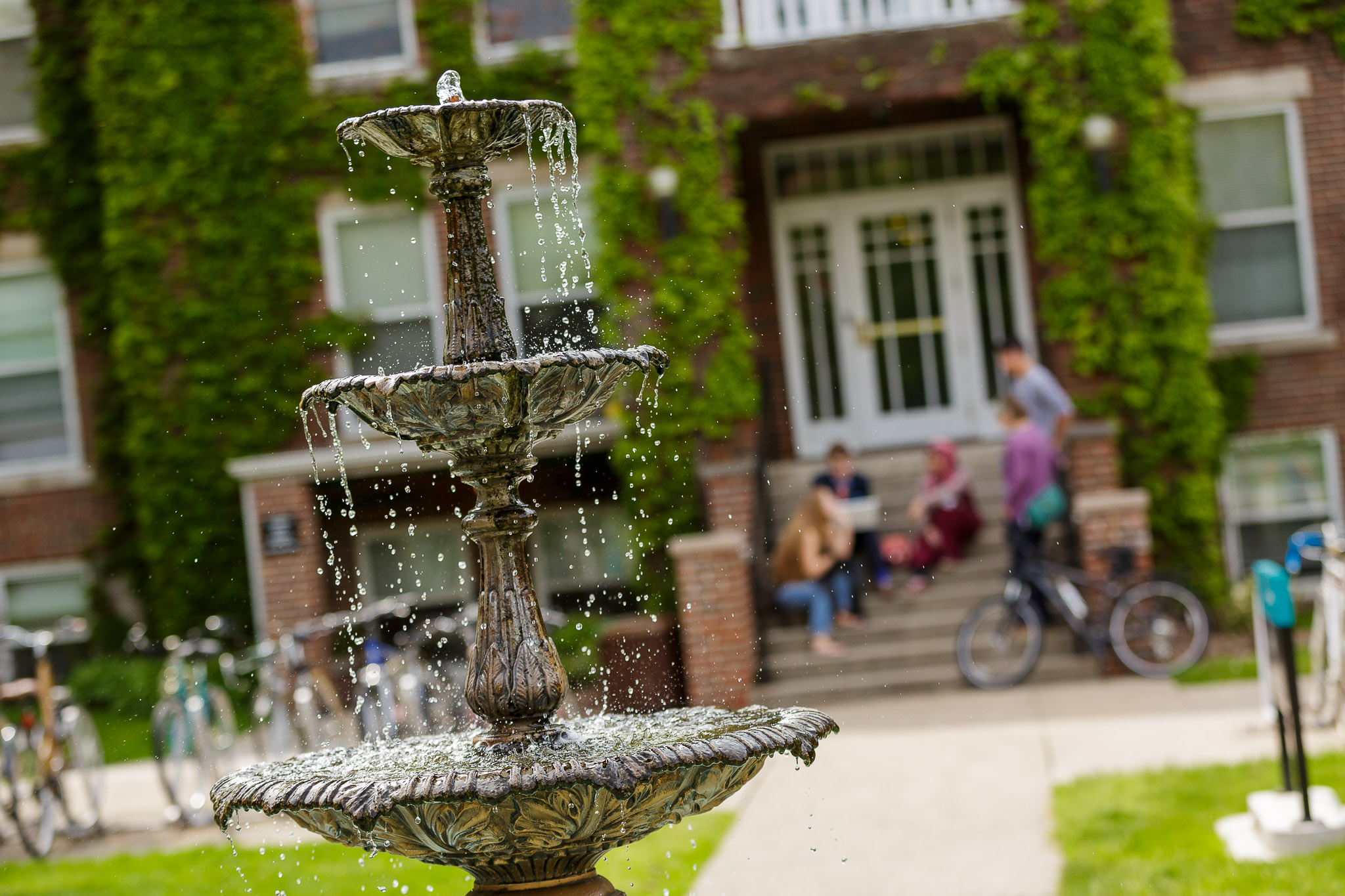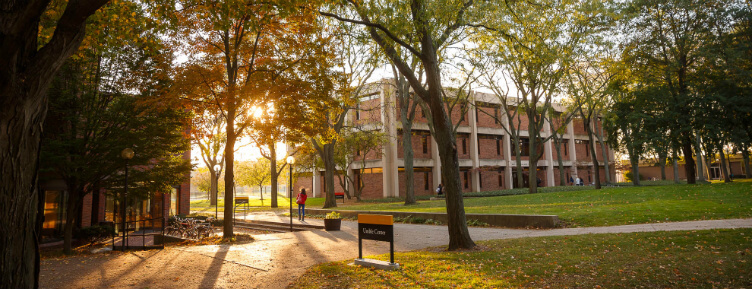Ngorongoro Conservation Area
At the heart of the Ngorongoro Conservation Area (NCA) is the Ngorongoro “crater”. It is a crater-like depression left by the collapse of the top of an ancient volcano cone, and home to an amazing variety of large animals.

We had the terrific good fortune to arrive shortly after the start of the rainy season. The freshly growing grass brought all manner of animals out. With our drivers’ help, we spotted giraffes, Thomson gazelle, eland, Cape buffalo, wildebeests, hippos, zebras, elephants, lions, more than 35 species. By the end of our trip our birders had recorded over 70 species! One highlight was catching a distant glimpse of a black rhino, which our guides had not seen in several years.
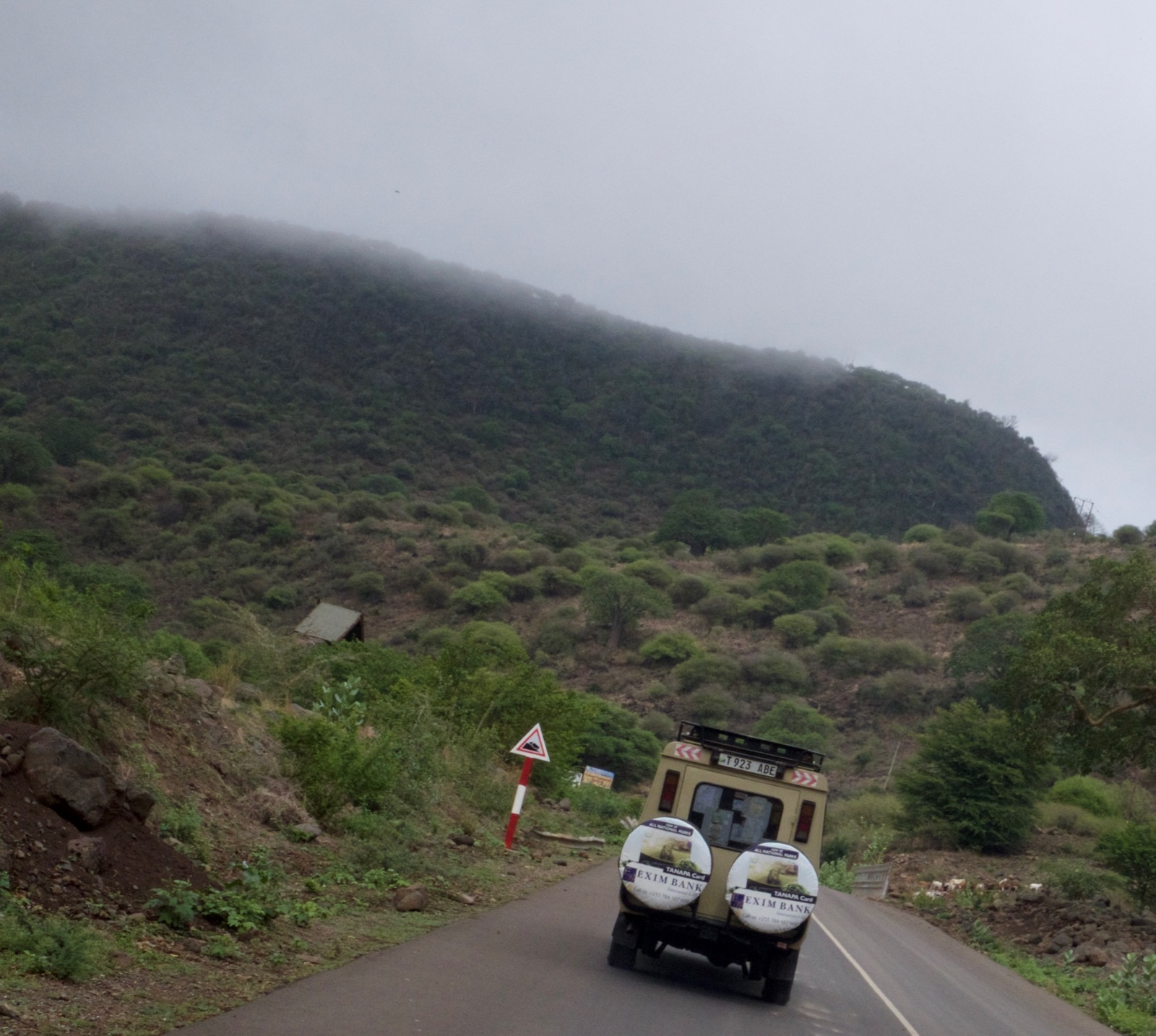
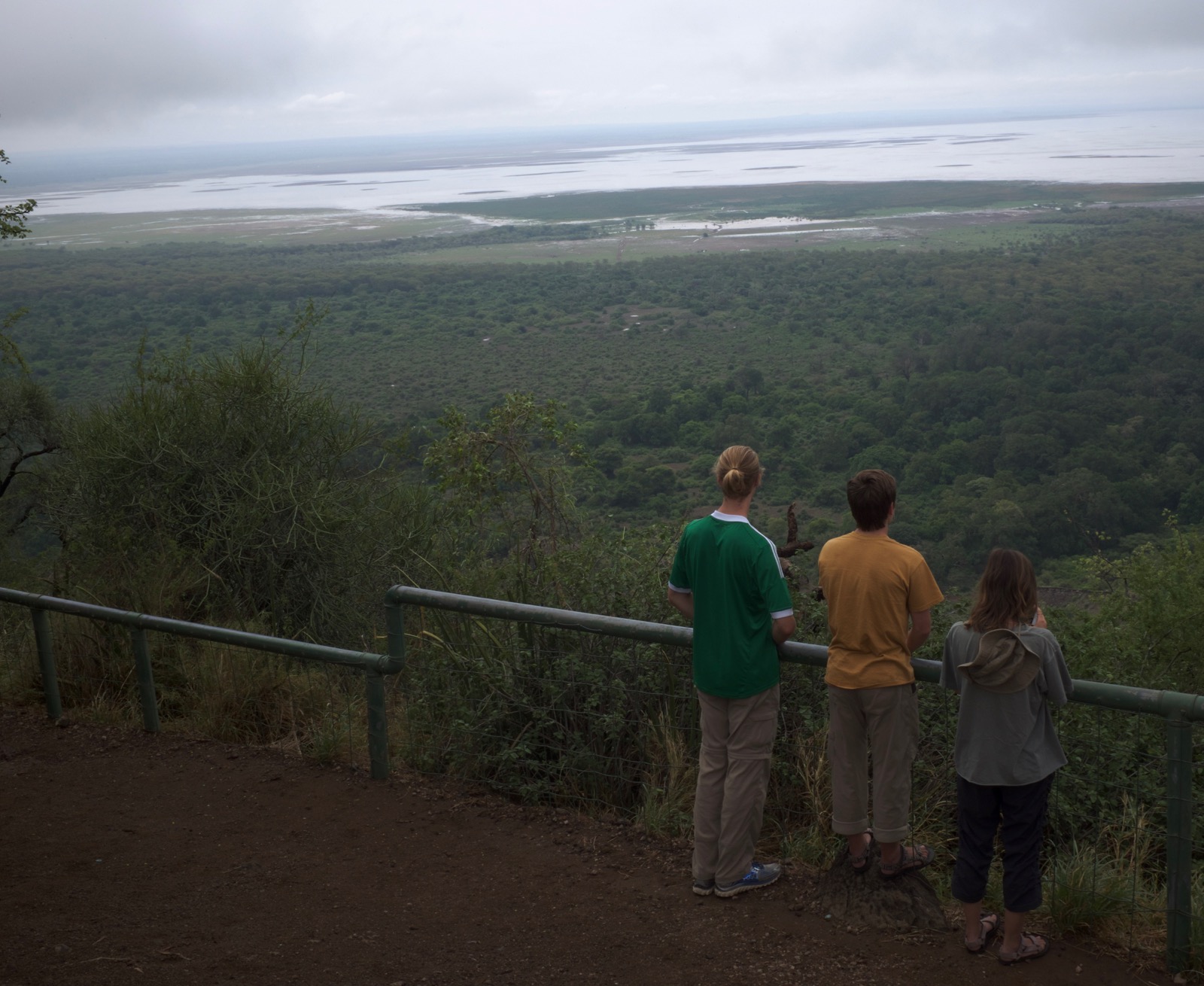
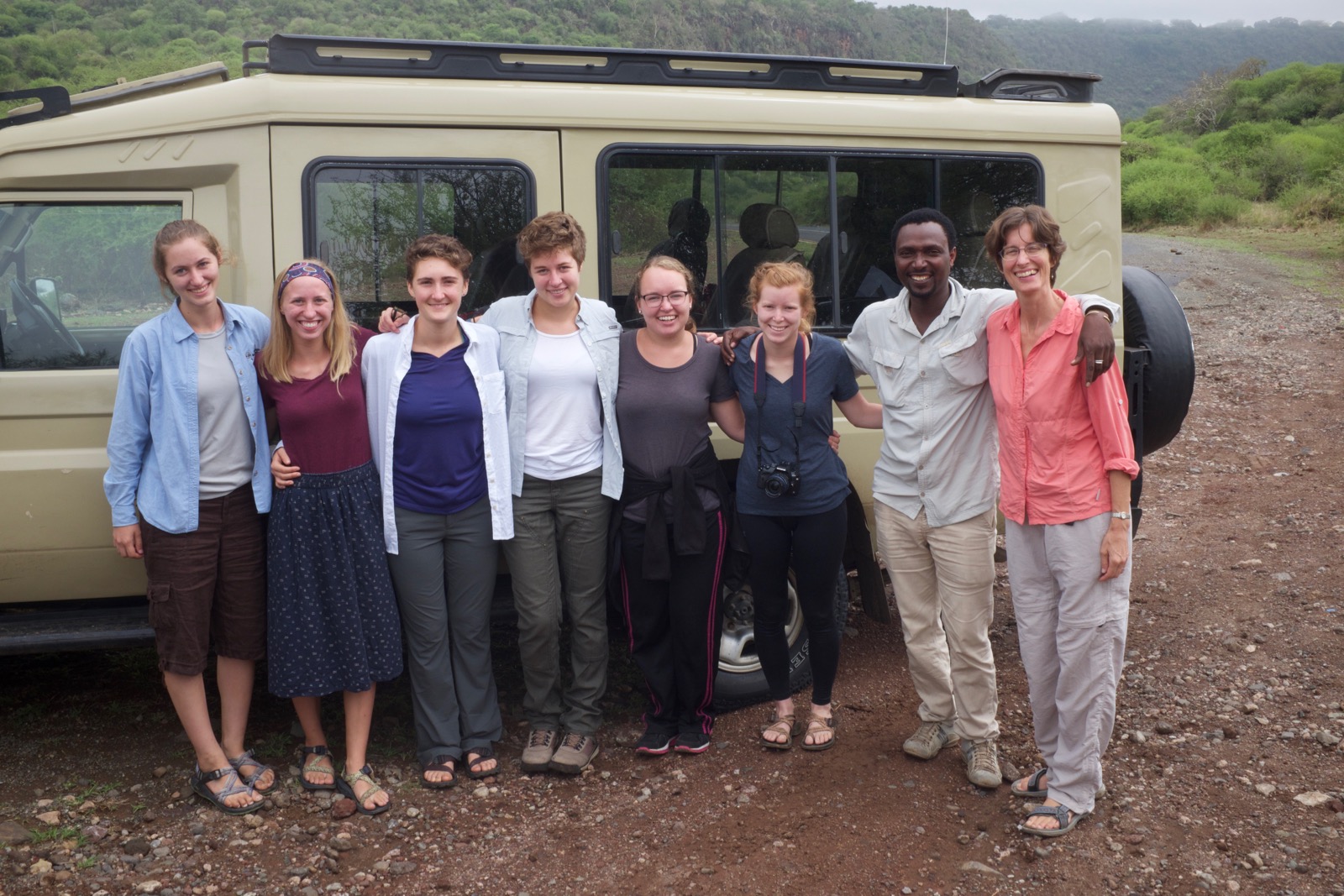
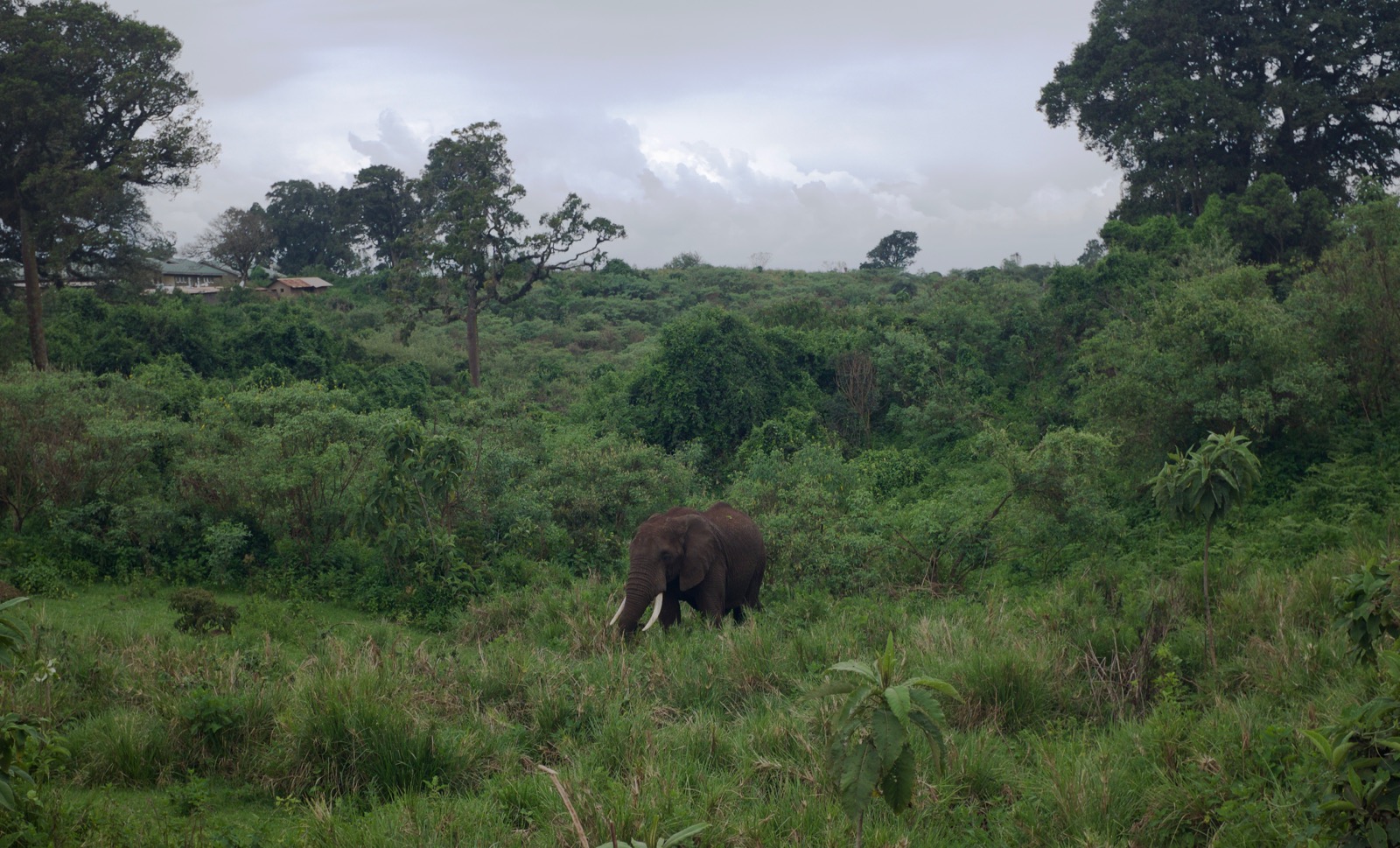
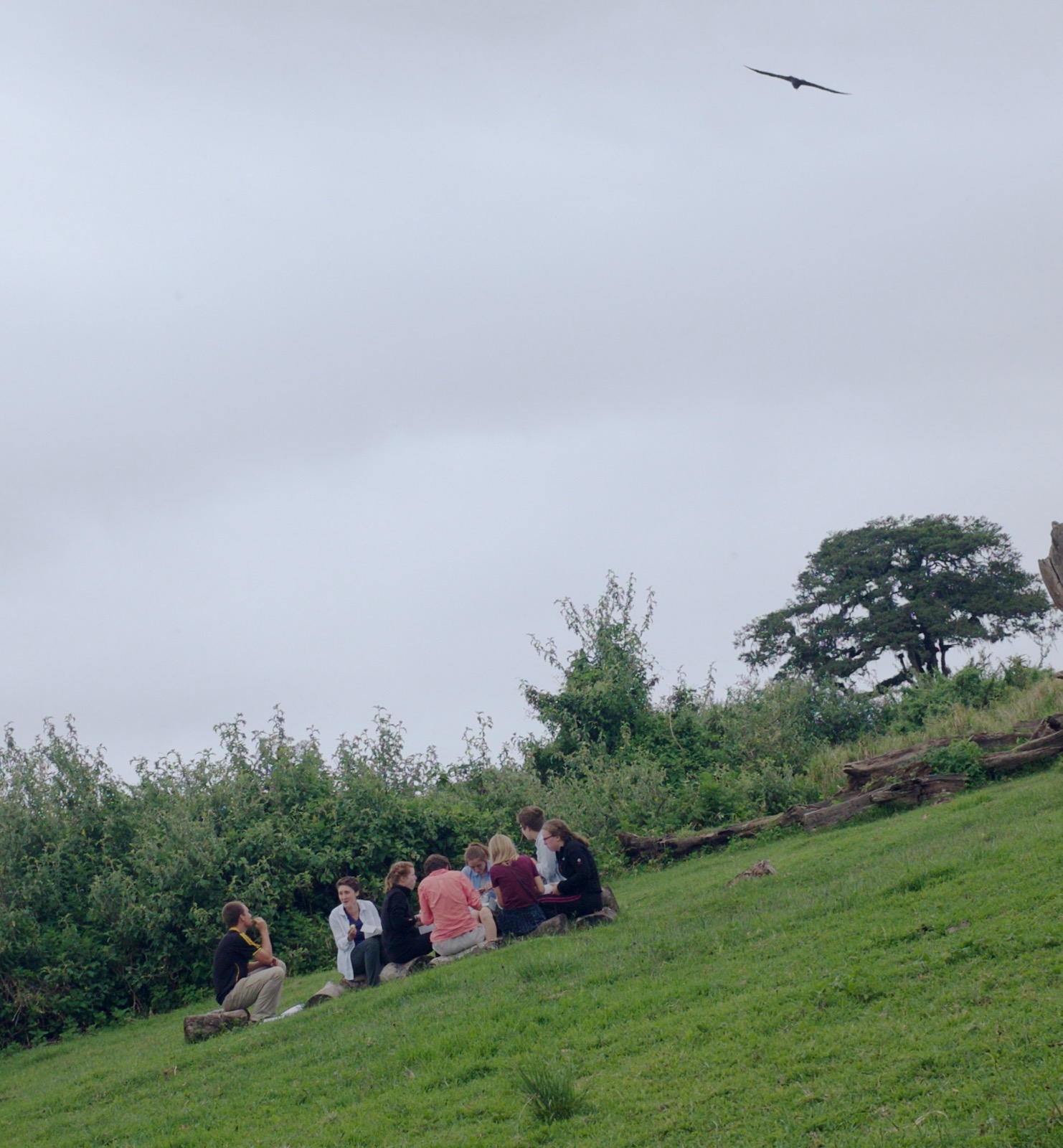
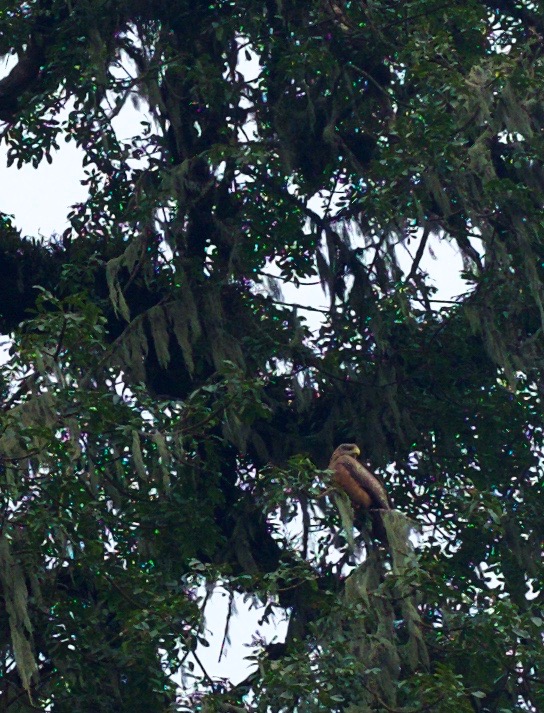
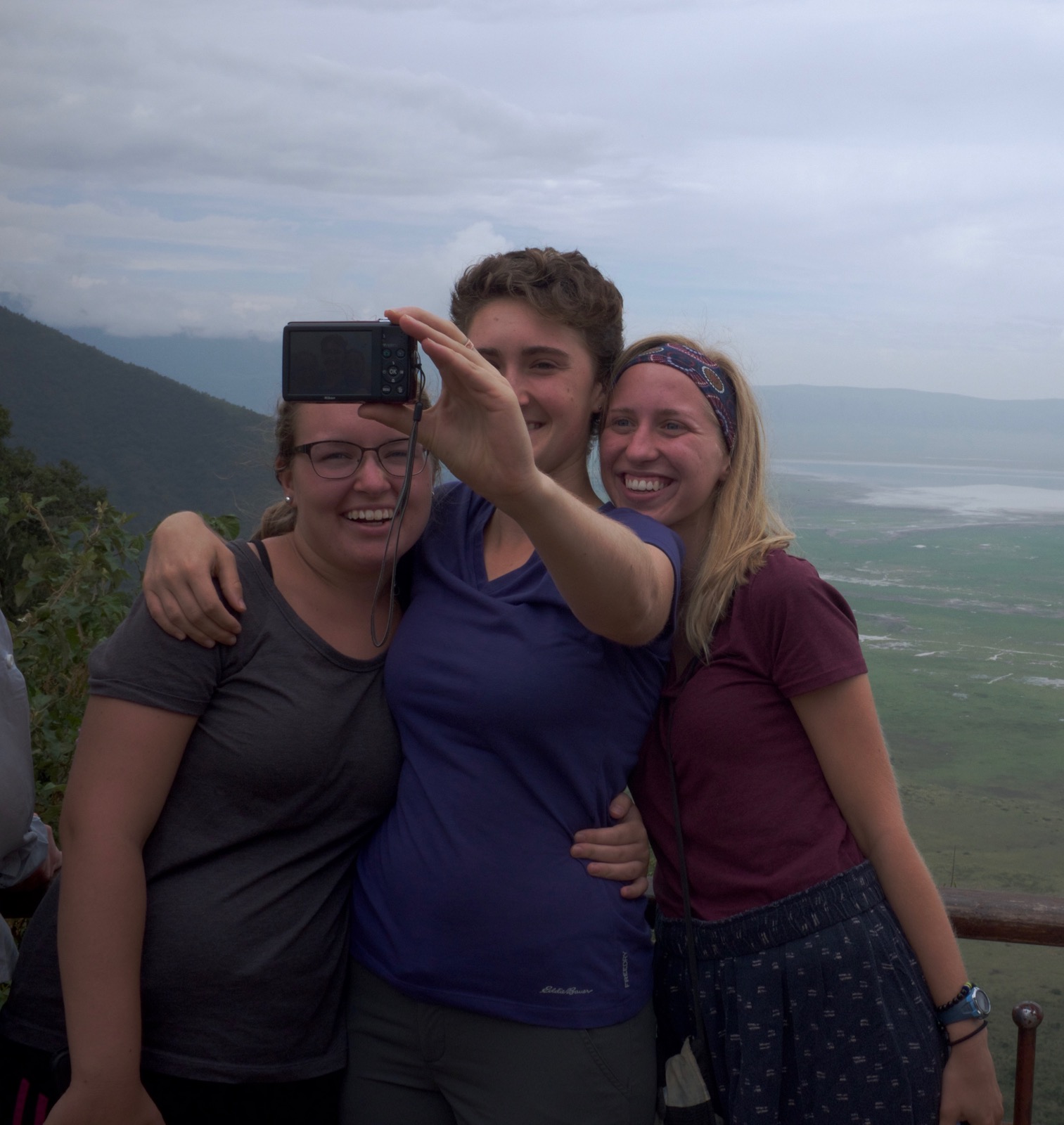
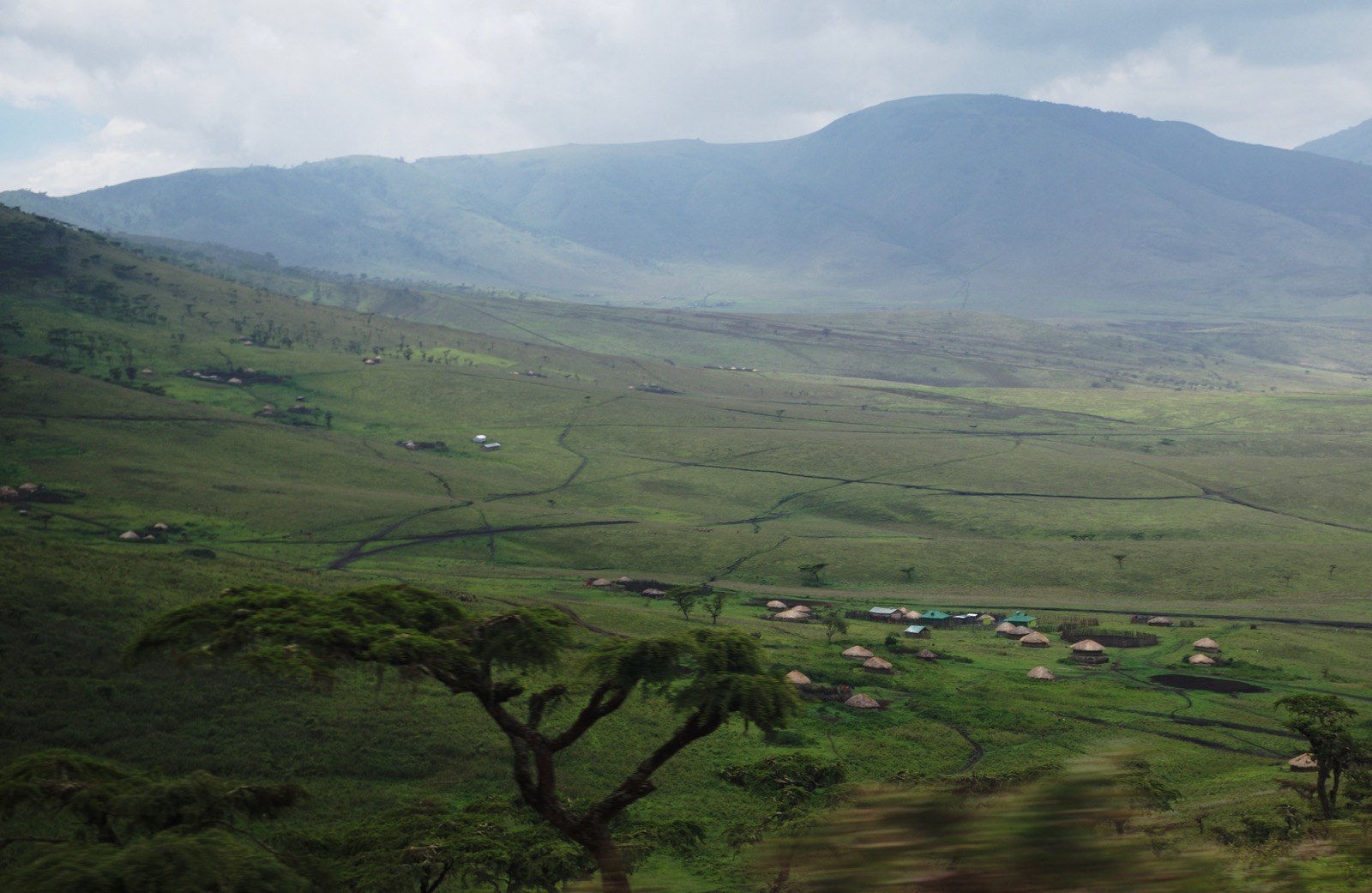
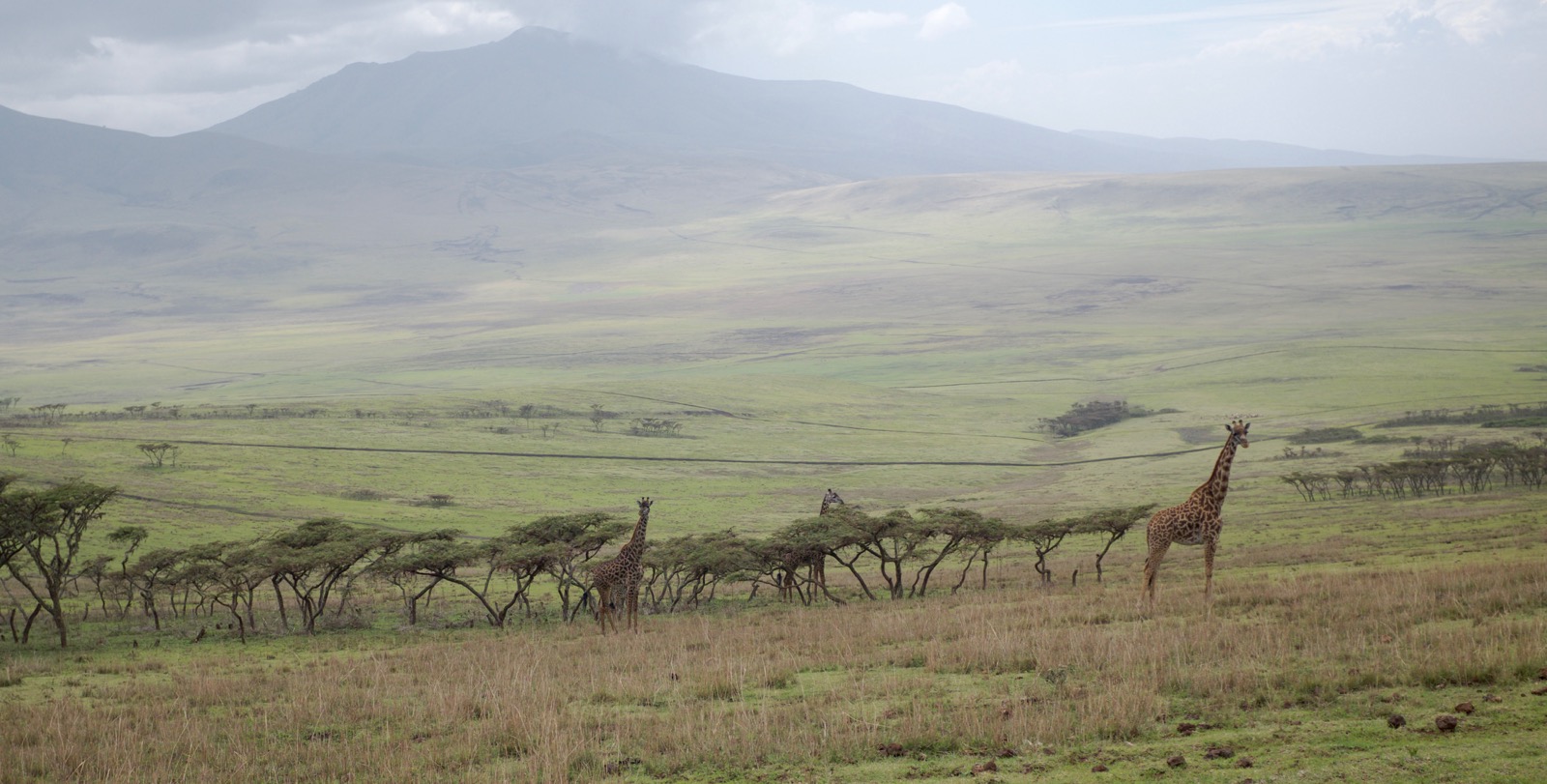
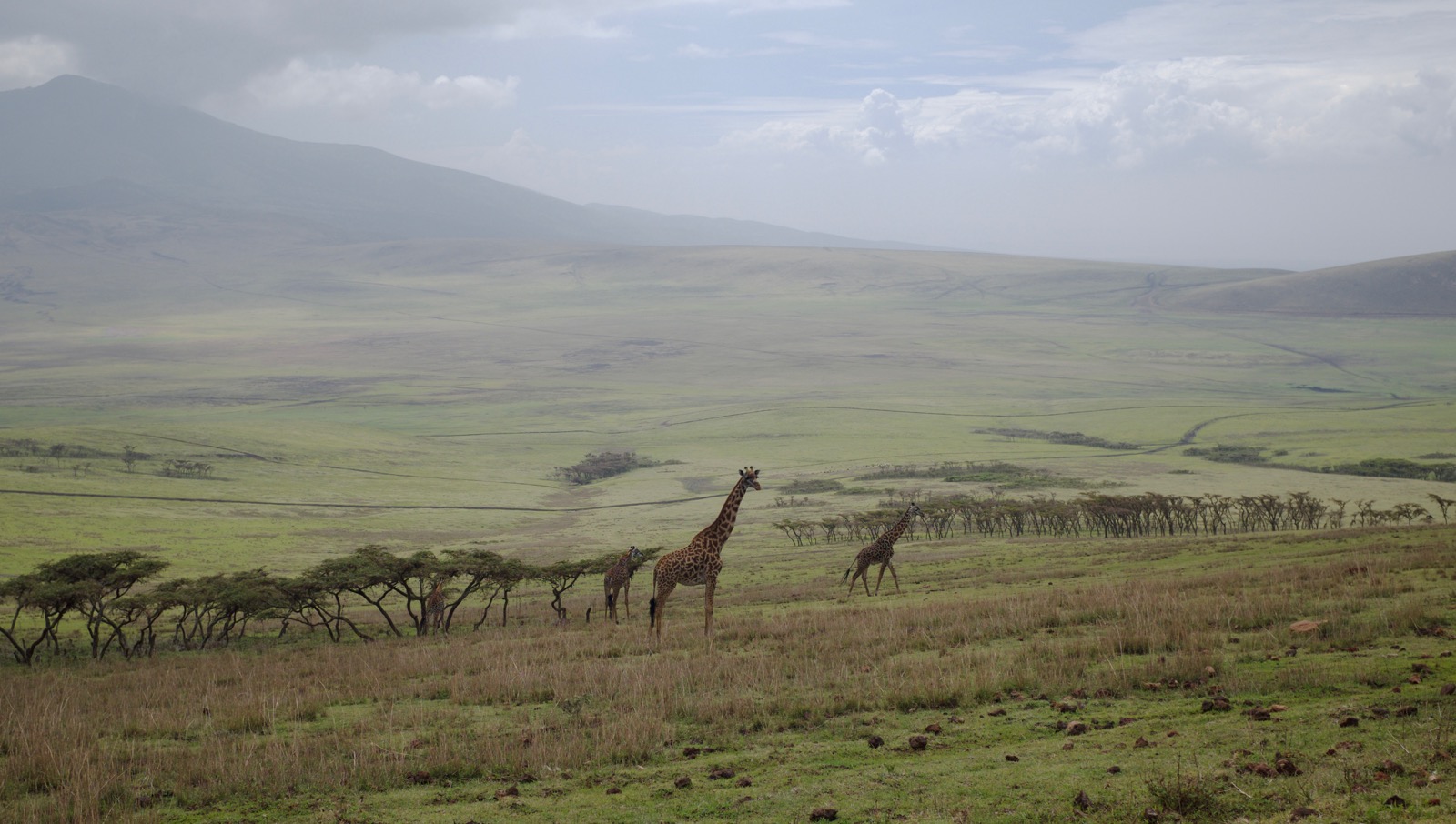
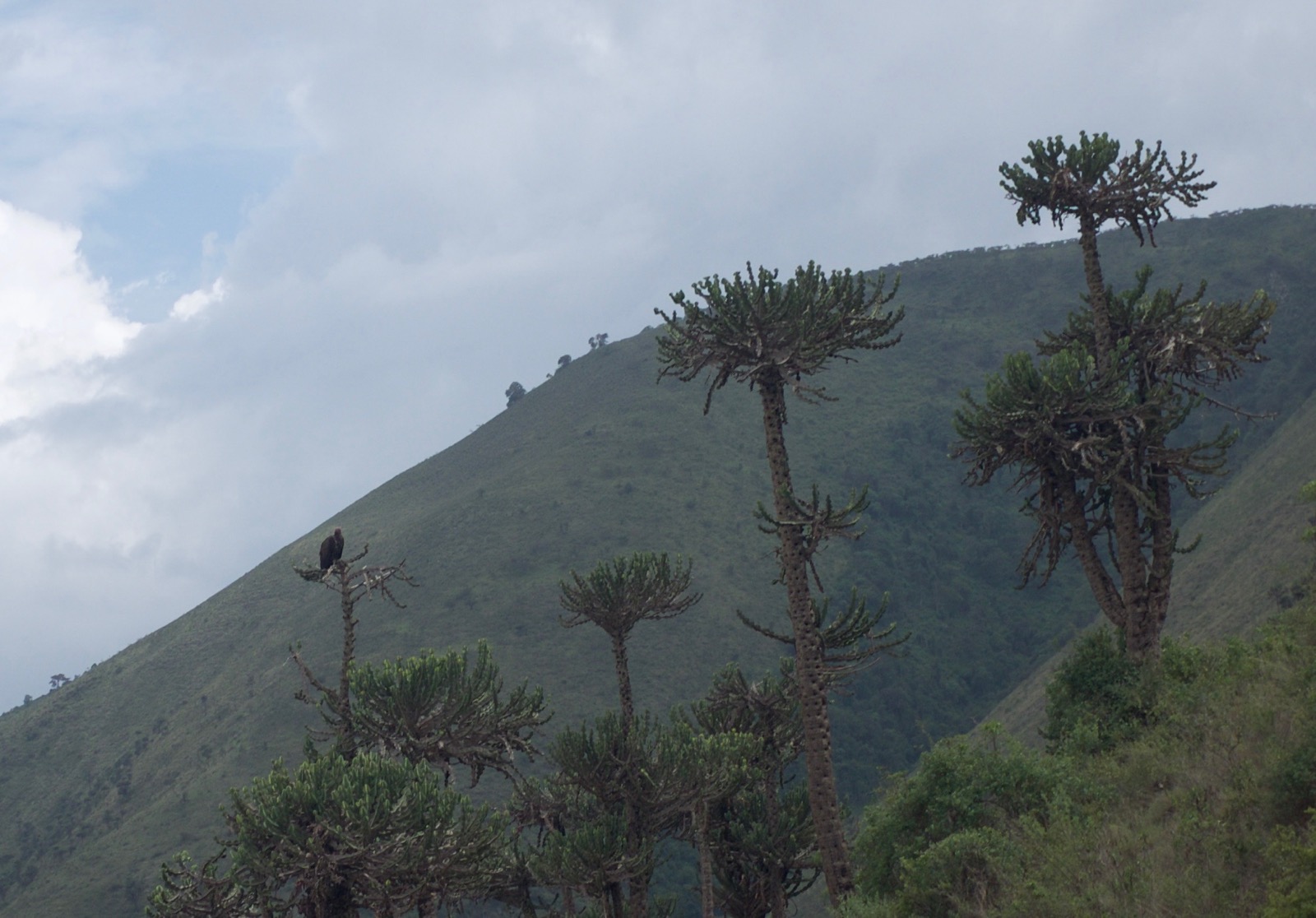
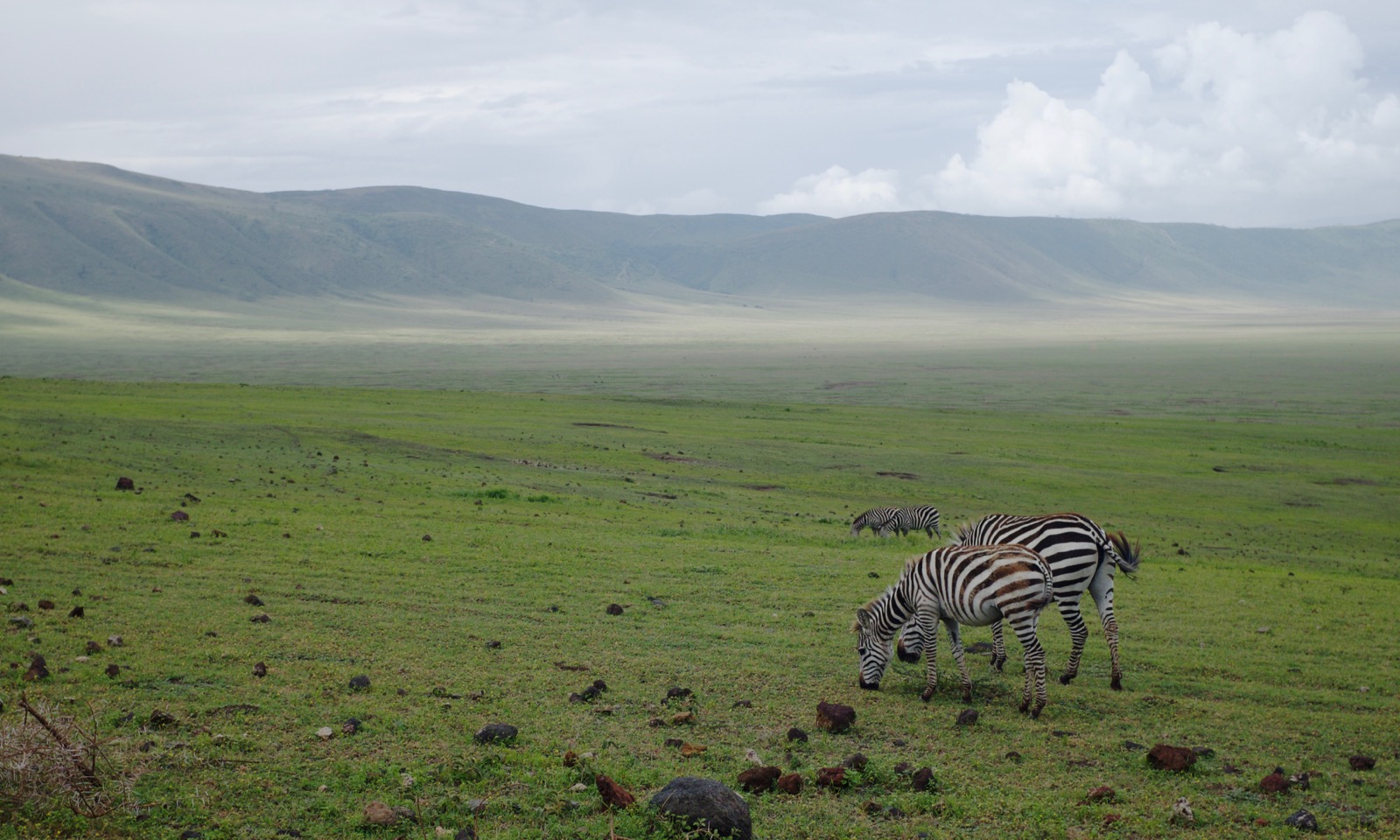
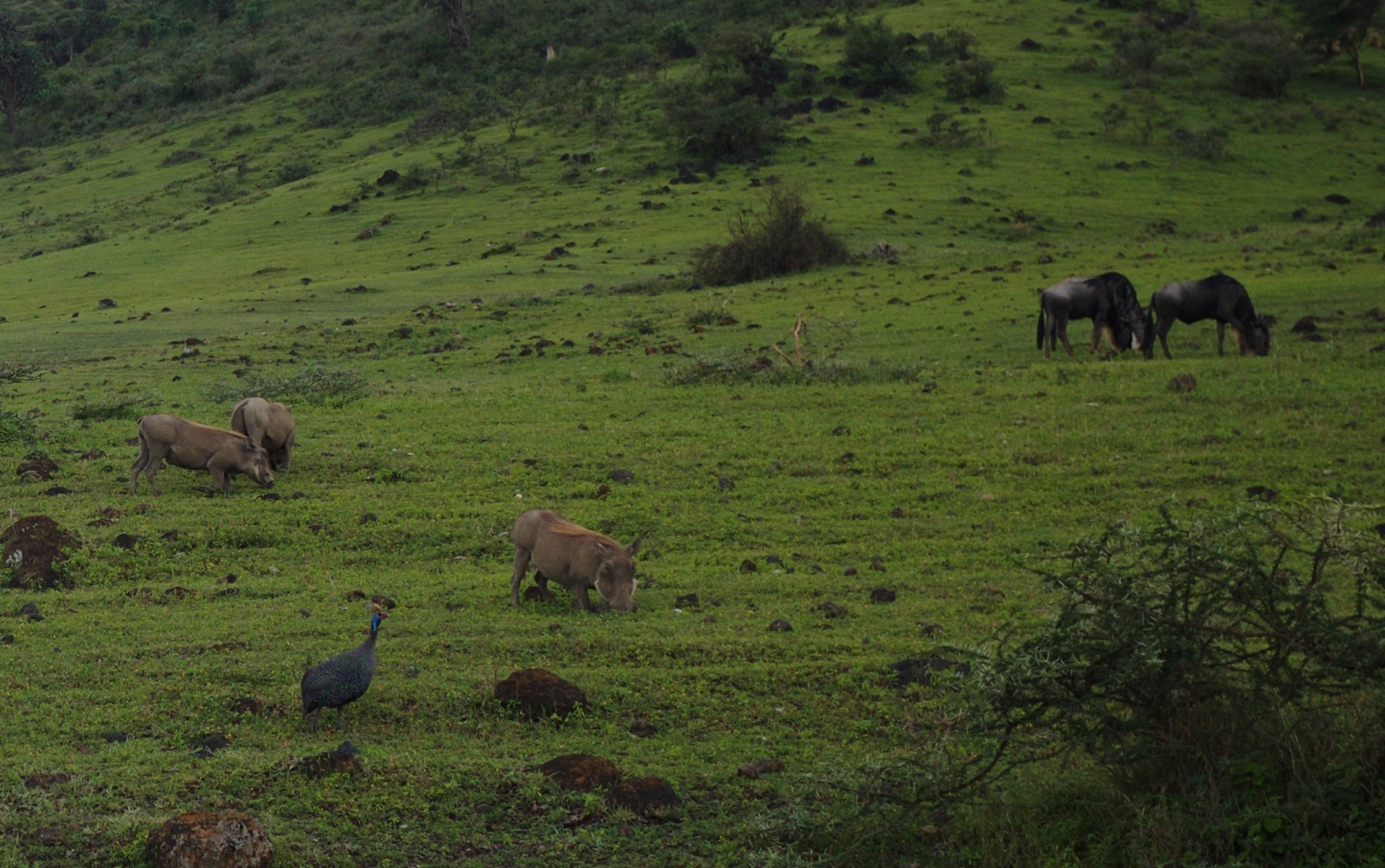
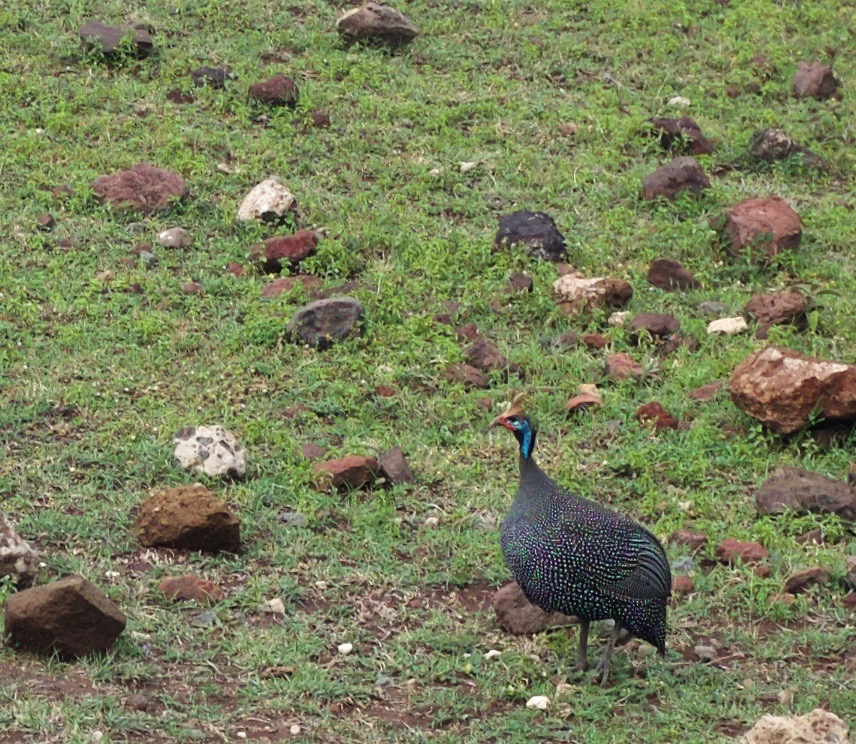
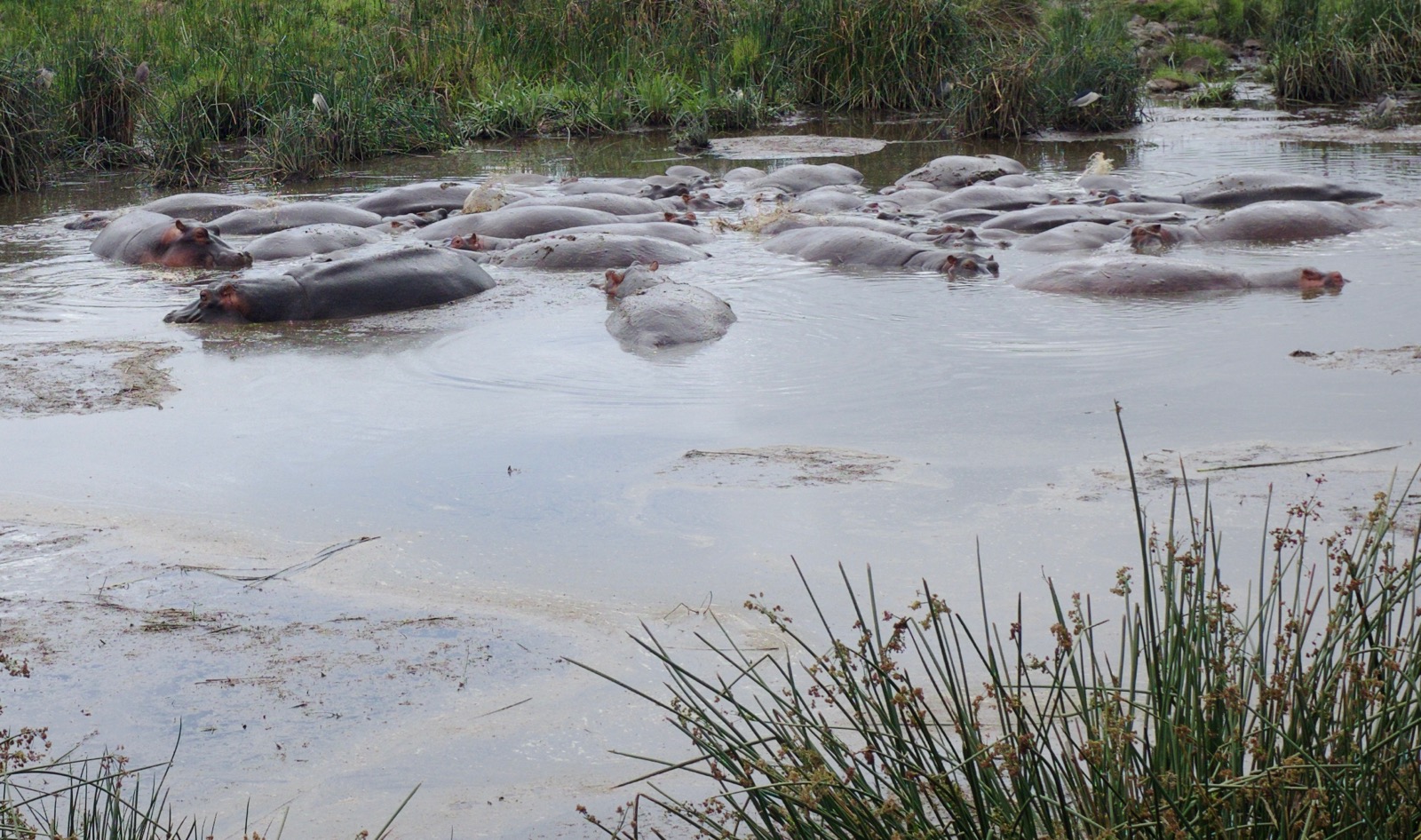
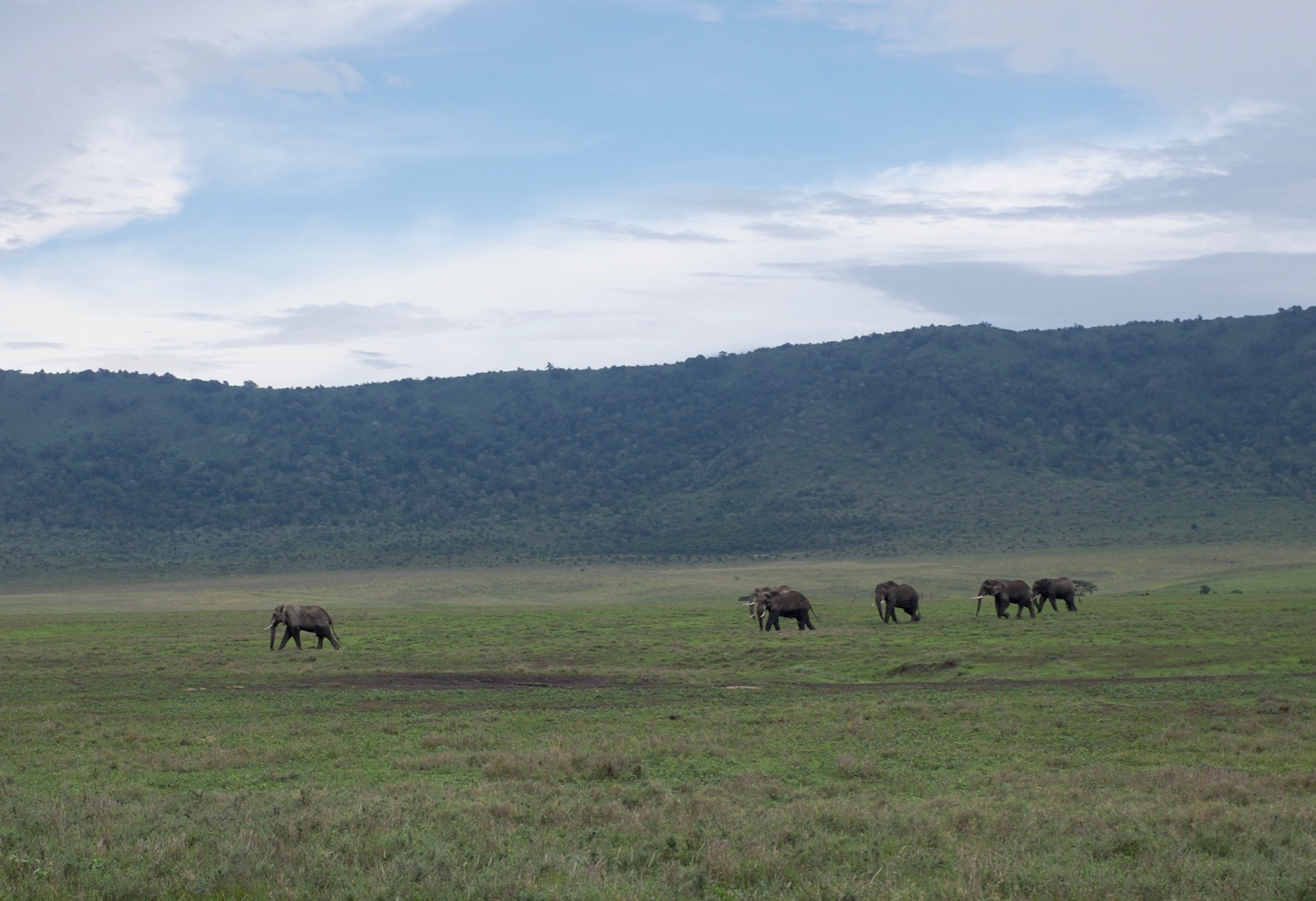
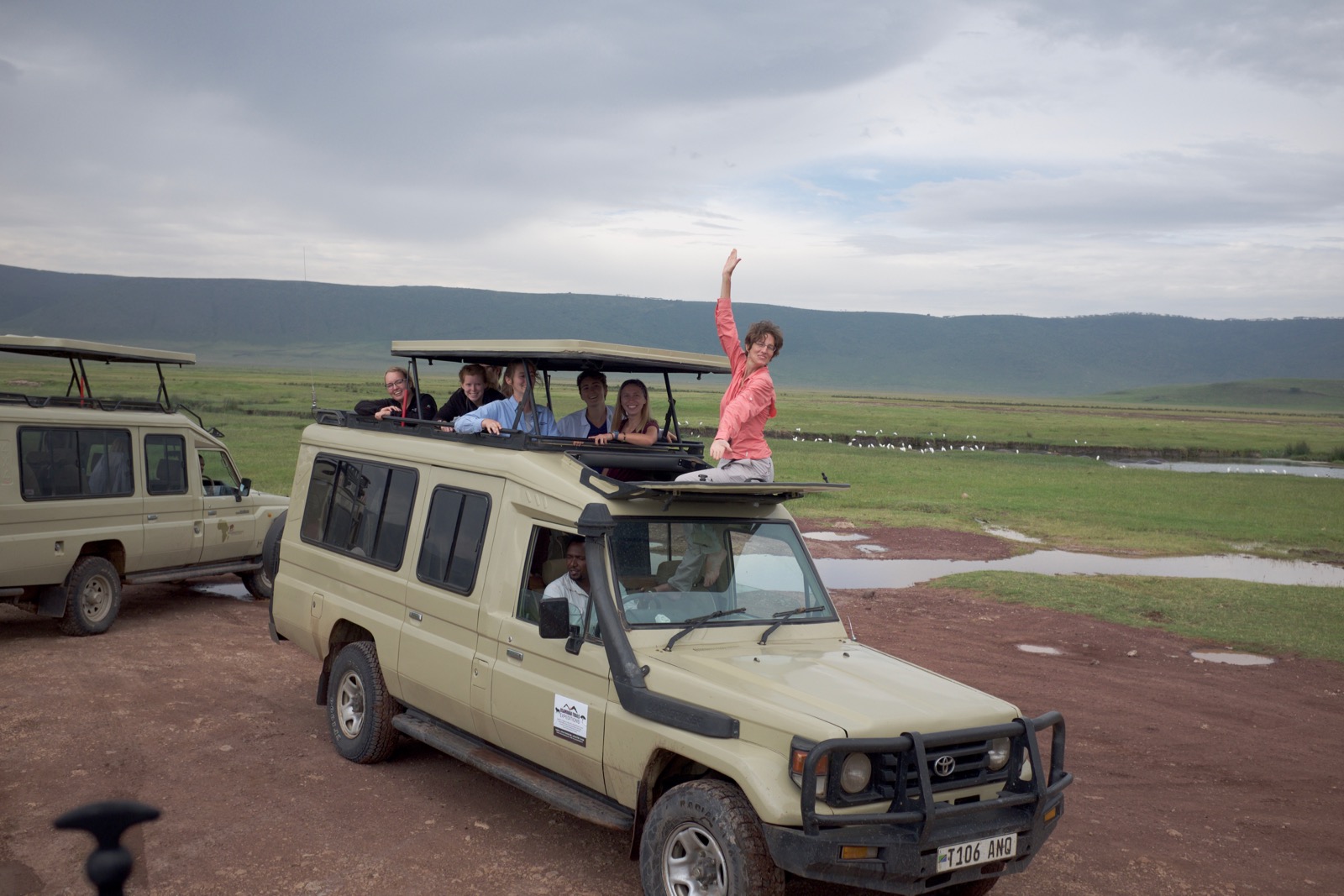
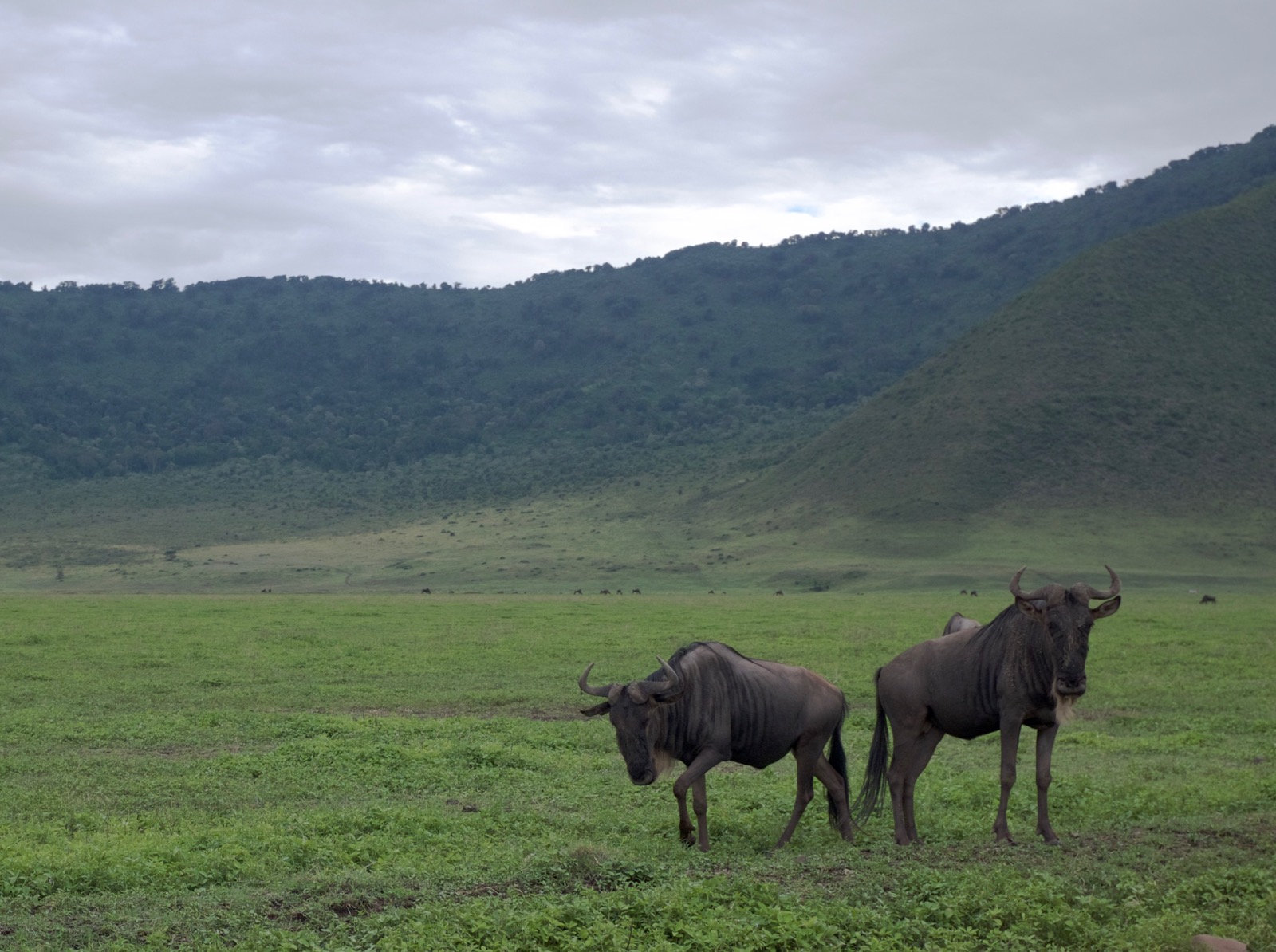
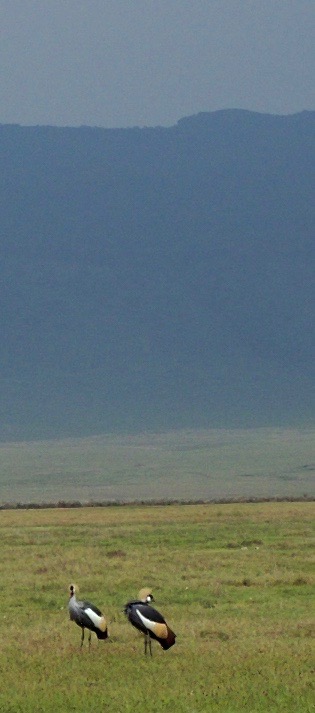
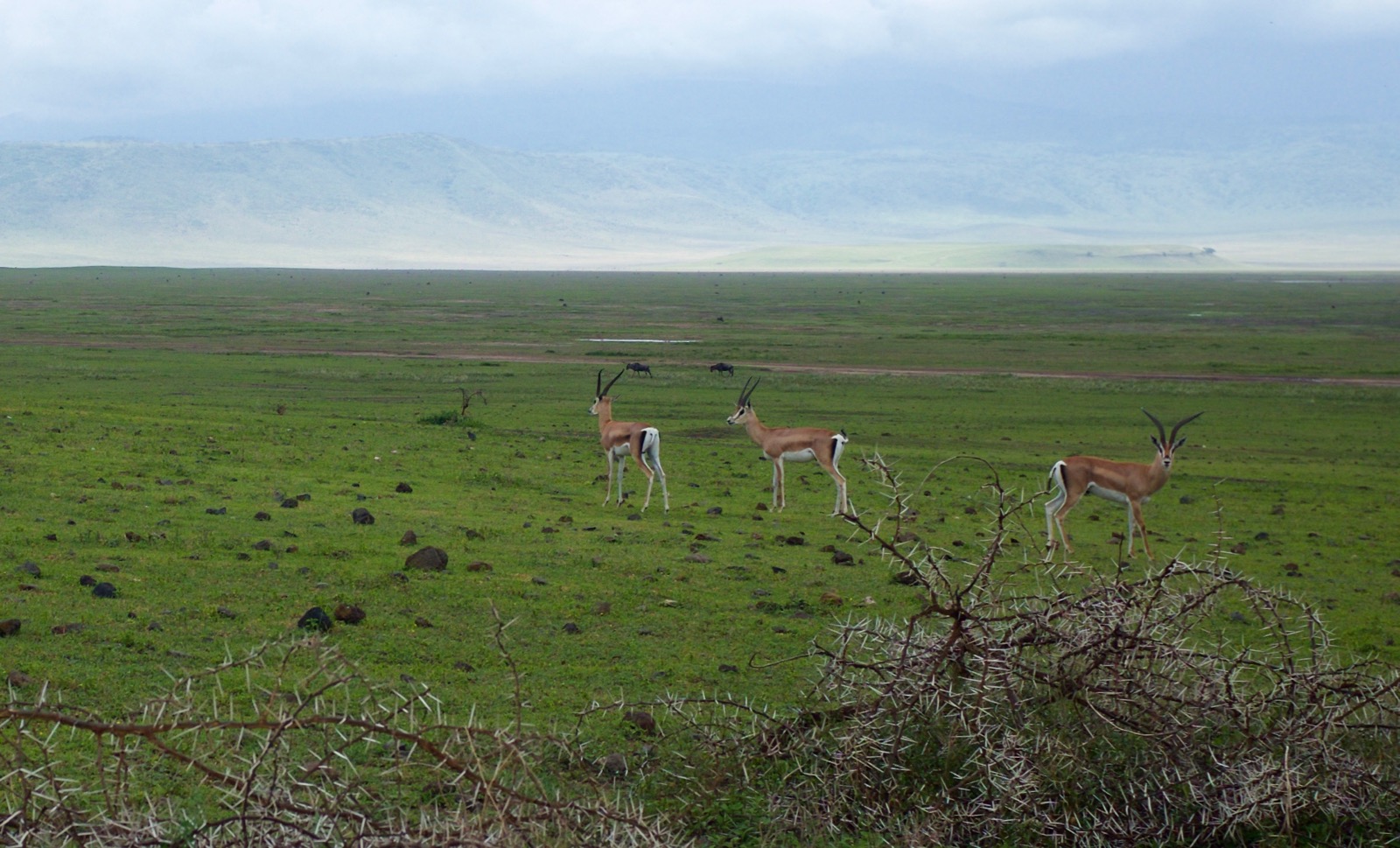
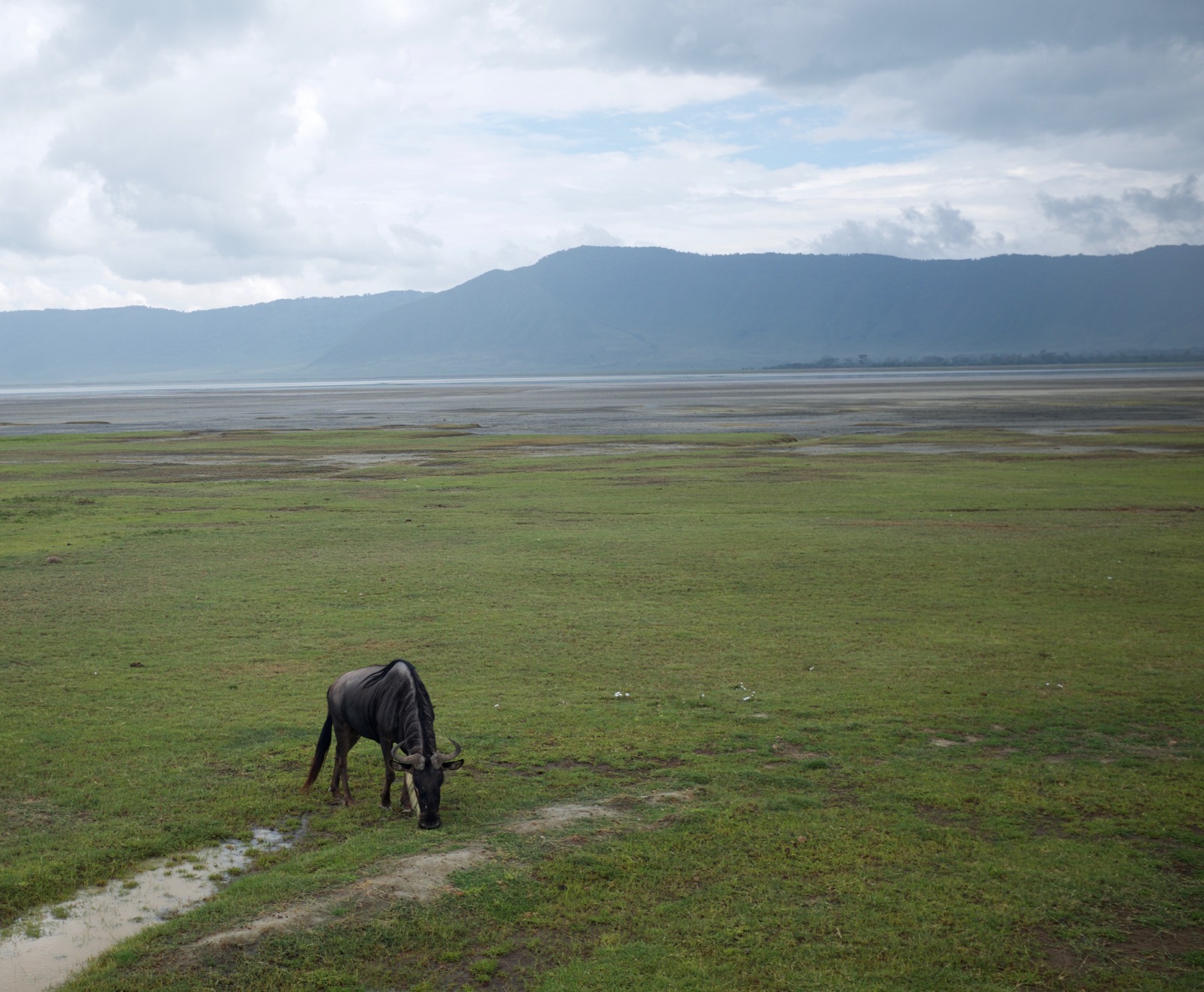
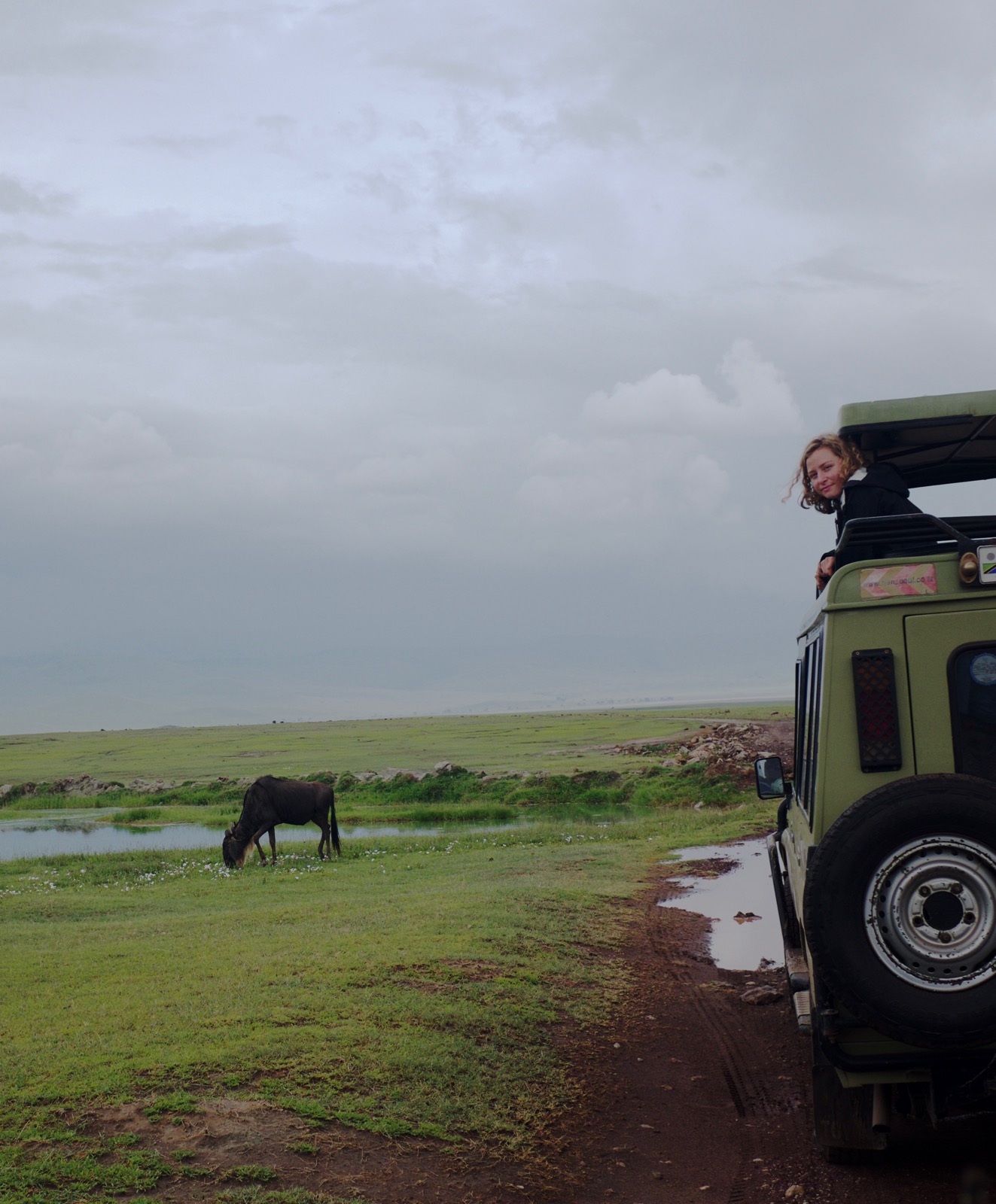
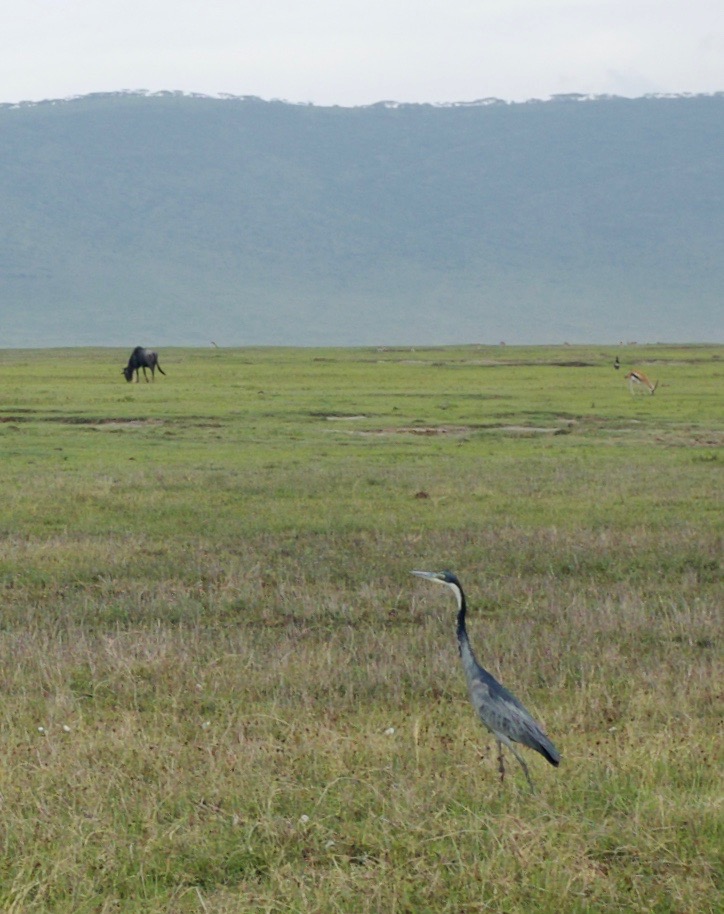
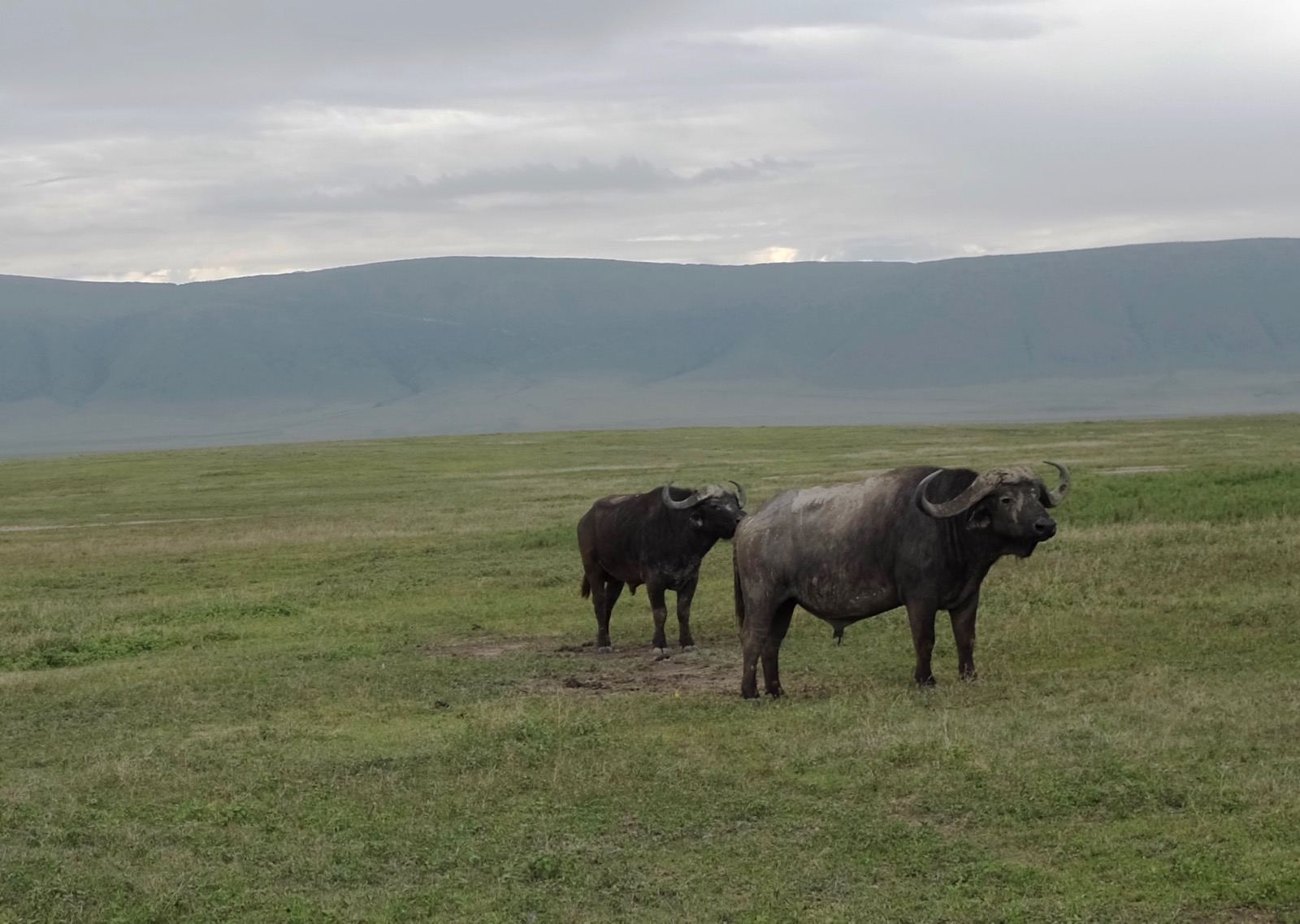
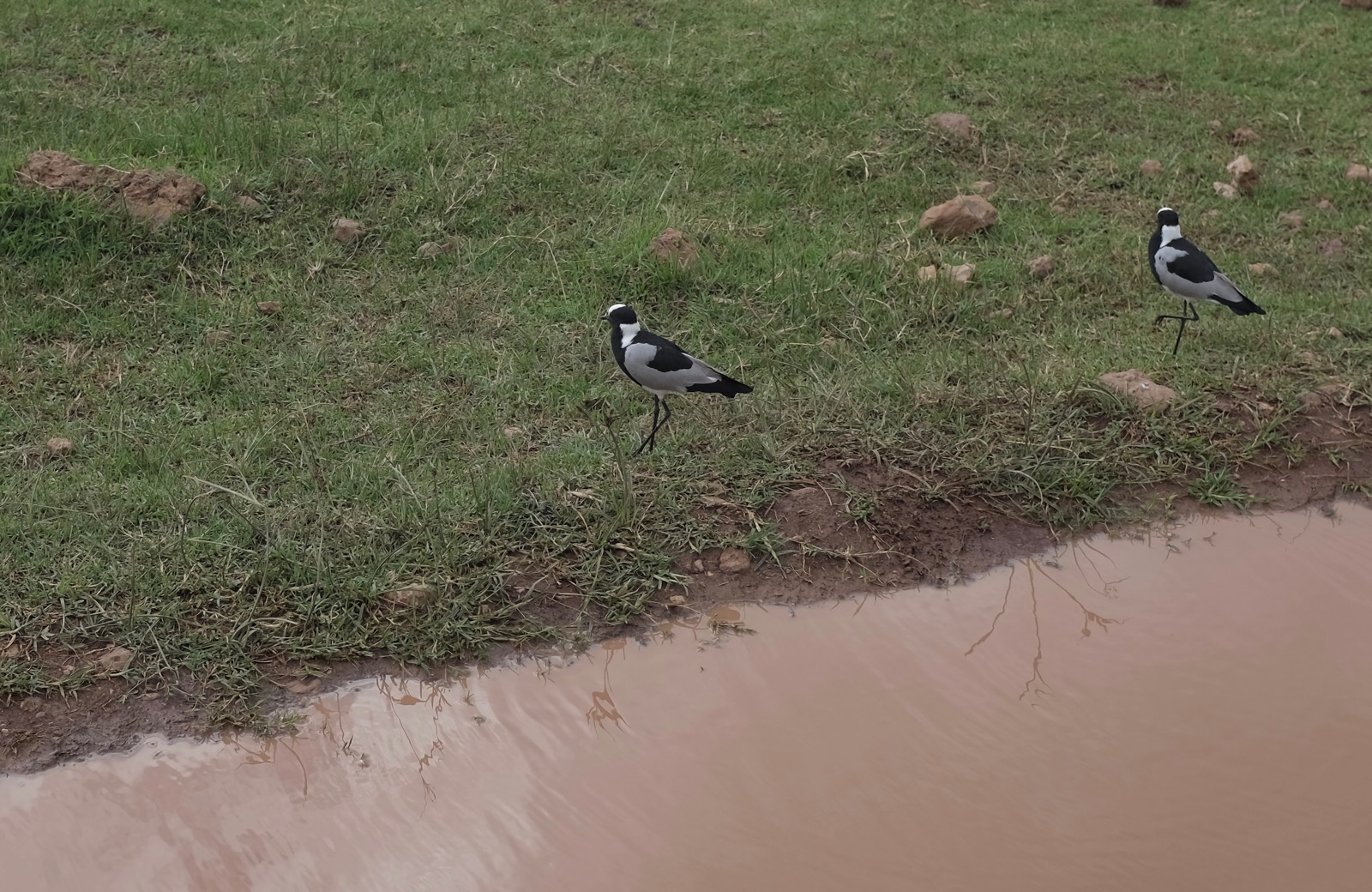

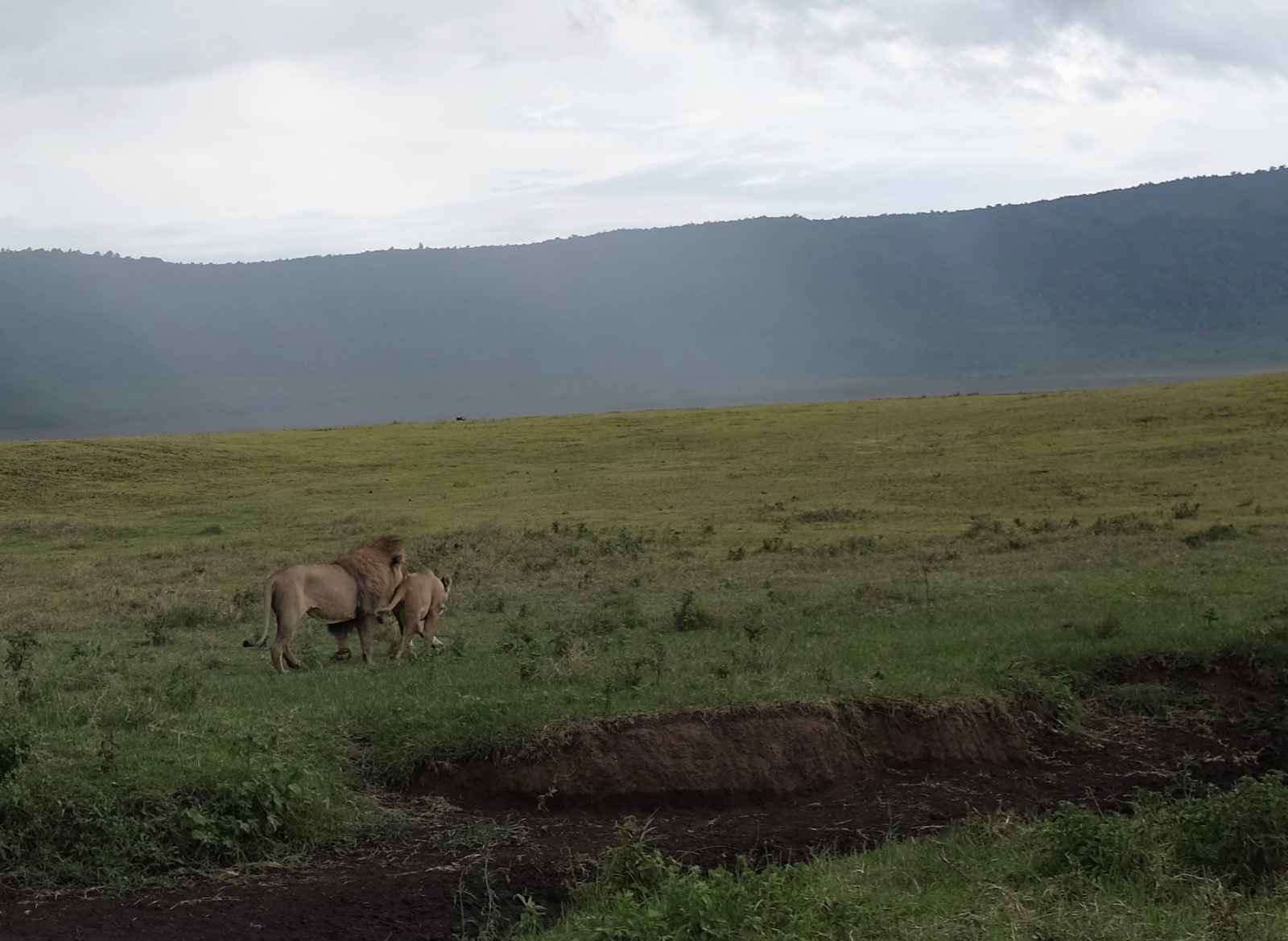

The Serengiti National Park, just to the west, was created in 1959, and the Maasai who lived in the Serengeti were promised that they could live in the Ngorongoro area after that. This is why the NCA is called a “conservation area” rather than a “national park” (where no people are allowed to live).
There are ongoing discussions about whether the Maasai can or can’t take their cattle into the crater to drink. The issue of human coexistence with animals is a live discussion, and is one theme of “Imagining Serengeti: A History of Landscape Memory…” which the students are reading.
We camped near the rim of the crater, and continued on the next morning towards the Serengeti, with a brief stop at the Oldupai or Olduvai gorge. As the area around the Rift valley has faulted, ancient sediments have been revealed, and the gorge is the site where the oldest remains of hominid ancestors have been found, dating back more than a million years ago.
